
The Pantanal – Recovery and ResilienceThe Pantanal in Brazil is the world’s greatest wetland and in 2020 it experienced devastating fires which killed millions of animals and devastated their habitats. Since then, it has been in a process of recovery. This essay attempts to look at some of the key elements in the Pantanal ecosystem today. It examines the importance of clean and continued water flow from the highlands to the north of the Pantanal, the area influenced by the threatened Amazon basin. It looks at the continuing effects of poorly planned and massive agricultural development in the highlands above the Pantanal and how the subsequent mass erosion carried by the Taquari River flooded over a million hectares of land in the delta region. This devastated both cattle farming as well as wildlife habitat and it continues today. These images look at the cycle of the wet and dry season and how that essentially saves the Pantanal from agricultural and mining development and reinforces the ecology. Tourism remains a vital element in securing the future of the Pantanal, but management of that tourism is sometimes lacking. Cattle ranching is a centuries old tradition in this place, with horses often being the only means of moving cattle to higher ground once the seasons change. Keystone species such as the jaguar remain the backbone of tourism for the Pantanal but ongoing conflict between cattle ranchers and jaguars remains the case, especially amongst those who cannot afford to develop jaguar tourism of their own to subsidize cattle losses. Finally, the Pantanal is also a conduit for drugs moving from other South and Central American countries into Brazil. There are hundreds of remote airstrips and the wreckage of many small planes is seen in a few places. There are subtle gang signs on the walls of the towns that surround the Pantanal, as Rio’s and Sao Paulo gangs extend their reach to move the narcotics landing on those small strips. First image: JOFFRE, P

CHAPPADA DOS GUIMARAES, MATTO GROSSO, BRAZIL: Rain falls during a sunset in the highlands overlooking the Northern Pantanal. This rain originates in the Amazon basin and is the contributing factor to the rivers that provide clean water and make the anual wet season flooding possibly for the Pantanal. As the Amazon has lost original forests to deforestation and logging, so the "flying rivers" that originate there have diminished in size. The health of the Pantanal ecosystem and its ancient wet and dry season are deeply reliant on these highlands and the water they provide.

CHAPPADA DOS GUIMARAES, MATTO GROSSO, BRAZIL: Views of the highlands directly overlooking the Northern Pantanal. The rivers and rain here are supported by air-borne water vapor from the Amazon basin that manifests in rain in these highlands and is the contributing factor to the rivers that provide clean water and make the annual wet season flooding possibly for the Pantanal. As the Amazon has lost huge tracts of original forests to deforestation and logging, so the "flying rivers" that originate there have diminished in size. The health of the Pantanal ecosystem and its ancient wet and dry season are deeply reliant on these highlands and the water they provide as well as their connection to the Amazon.

CUIABA RIVER, PANTANAL, BRAZIL: Vultures land on a large dead cayman, most likely struck by a speeding boat carrying sport fisherman on the Cuiaba river. Tourism is a vital resource for the overall survival of the Pantanal but it is often poorly supervised.

JOFFRE, PANTANAL, BRAZIL: Horses on a cattle ranch graze at the water's edge late in the afternoon. These horses are the only way to access large parts of the Pantanal for the majority of the year. They are a vital part of the cattle industry that has been in the Pantanal since the 16th century. Cattle are moved according to the season, once the rains come and the wet season begins, they can often be moved many miles away to higher ground.

JOFFRE, PANTANAL, BRAZIL: Deer antlers litter a former toilet on a formerly grand but now unused cattle ranch. Many of the ranchers of the Pantanal speculate with land prices and cattle, buying and selling and often running the farm from the cities of Brazil. Newer, more modern and efficient farming practises exist on few farms, the restrictions on farming are severe by the environmental ministry despite the fact that all ranchers must cede at least 20% of their land to the wild.

CHAPPADA DOS GUIMARAES, MATTO GROSSO, BRAZIL: Views of the highlands directly overlooking the Northern Pantanal. The rivers and rain here are supported by air-borne water vapor from the Amazon basin that manifests in rain in these highlands and is the contributing factor to the rivers that provide clean water and make the annual wet season flooding possibly for the Pantanal. As the Amazon has lost huge tracts of original forests to deforestation and logging, so the "flying rivers" that originate there have diminished in size. The health of the Pantanal ecosystem and its ancient wet and dry season are deeply reliant on these highlands and the water they provide as well as their connection to the Amazon.

CUIABA RIVER, PANTANAL, BRAZIL: A large male jaguar lies on the bank of the Cuiaba river after finishing a meal of capibara. Jaguars are a huge tourist lure and bring millions into the Pantanal every year. Ranchers complain that the jaguars also take cattle but their value for attracting tourism far exceeds losses from cattle lost to these animals.

CUIABA RIVER, PANTANAL, BRAZIL: A male jaguar stalks through the long grass on the bank of the Cuiaba river in search of a meal. Jaguars are a huge tourist lure and bring millions into the Pantanal every year. Ranchers complain that the jaguars also take cattle but their value for attracting tourism far exceeds losses from cattle lost to these animals.

CUIABA RIVER, PANTANAL, BRAZIL: Jaguars are the world's most aquatic cat and do much of their hunting in the river and on the banks. They are a huge tourist lure for the Pantanal. They bring millions in revenue into the Pantanal every year. Ranchers complain that the jaguars take their cattle but their value for attracting tourism far exceeds losses from cattle lost to these animals.

MIRANDA, MATTO GROSSO DU SOL, BRAZIL: A forest burnt down by the fires of 2020 is seen slowly recovering with many dead trees visible. There have been no major fires since 2020 but that is because the tinder load is low after the huge fires of 2020. The Pantaneros are wary of this and want a better response from government for the next fires.

JOFFRE, PANTANAL, BRAZIL: The Pantanal has an ecology that is very much dependent on the dray and wet season. In this image, the dry season takes hold in the Pantanal, the water sliding away from the banks in an age-old cycle vital to the ecosystem of the Pantanal. The rising flood waters of the wet season are a key reason why the Pantanal remains laregely undeveloped and a refuge for many species.

TAQUARI RIVER DELTA AREA, MATTO GROSSO DOS SUL, PANTANAL, BRAZIL. Talisma Farm is seen surrounded by water even though this is the dry season in the Pantanal. In the wet season, this small farmhouse is completely an island. This is due to seriously flawed environmental planning in 1974 when the Brazilian government initiated an aggressive agricultural development plan in the highlands above the Pantanal. A huge flood dumped millions of tons of topsoil into the Taquari river and other tributaries, diverting the river and reducing the flow to the Paraguay river to 30% and creating a permanent flood condition which destroyed over 1 million hectares of the Pantanal overnight. Hundreds of farms were ruined and Talisma farm is one of only 4 farms today still operating in the flooded delta. They and the other survivors went from thousands of head of cattle to growing bananas to survive. Eroded soil continues to be dumped in the Taquari delta when the rains come and flow to the all-important Paraguay river continues to diminish.

TAQUARI RIVER DELTA AREA, MATTO GROSSO DOS SUL, PANTANAL, BRAZIL. Eraco Vilaba was born on Talisma farm and has lived there all of his 81 years. Despite this being the dry season his farm is always surrounded by water. When he was a boy, Eraco's father ran 5000 cattle on the farm until 1974. This permanently flooded situatuon is due to seriously flawed environmental planning in 1974 when the Brazilian government initiated an aggressive agricultural development plan in the highlands above the Pantanal. A huge flood dumped millions of tons of topsoil into the Taquari river and other tributaries, diverting the river and reducing the flow to the Paraguay river to 30% and creating a permanent flood condition which destroyed over 1 million hectares of the Pantanal overnight. Hundreds of farms were ruined and Talisma farm is one of only 4 farms still operating in the flooded delta. Nowadays, Eraco and his wife of 51 years, Sonia, grow bananas to survive. They are amongst the very last farmers still surviving in the Taquari river delta area and they say they will do this for two more years before they will join their children in the city of Corumba. Eroded soil continues to be dumped in the Taquari delta when the rains come and flow to the all-important Paraguay river continues to diminish.

TAQUARI RIVER DELTA AREA, MATTO GROSSO DOS SUL, PANTANAL, BRAZIL. Eraco Vilaba was born on Talisma farm and has lived there all of his 81 years. Despite this being the dry season his farm is always surrounded by water. When he was a boy, Eraco's father ran 5000 cattle on the farm until 1974. This permanently flooded situatuon is due to seriously flawed environmental planning in 1974 when the Brazilian government initiated an aggressive agricultural development plan in the highlands above the Pantanal. A huge flood dumped millions of tons of topsoil into the Taquari river and other tributaries, diverting the river and reducing the flow to the Paraguay river to 30% and creating a permanent flood condition which destroyed over 1 million hectares of the Pantanal overnight. Hundreds of farms were ruined and Talisma farm is one of only 4 farms still operating in the flooded delta. Nowadays, Eraco and his wife of 51 years, Sonia, grow bananas to survive. They are amongst the very last farmers still surviving in the Taquari river delta area and they say they will do this for two more years before they will join their children in the city of Corumba. Eroded soil continues to be dumped in the Taquari delta when the rains come and flow to the all-important Paraguay river continues to diminish.

SAN FRANSCISCO FAZENDA, MIRANDA, MATTO GROSSO DU SUL, BRAZIL: Farmer's wife Fernanda Bredow stands with her baby Cecilia as they pack up after working with a plane to seed fields all day. Specialized waterways on this farm dug out 30 years ago that channel water from the Miranda river to fields for rice-growing and other agriculture. This would be largely illegal today in the Pantanal but because this farm is right on the border of the Pantanal they can get away with it. San Francisco Fazenda is an unusual ranch that has ecotourism, cattle ranching and crop growing all in one place. Cattle ranching is an ancient practice in the Pantanal. The cattle are usually moved from lower to higher ground as the dry season becomes the wet season. There is a feeling amongst the more powerful rancher farmers of the Pantanal that the Pantanal is too protected and that using the technology of the highlands could play a role in better farming without disturbing the ecosystem. Much of that technology would be about water distribution. The farmers point out that much of the erosion on farms into rivers in the Pantanal could be prevented by dykes, which existed before the enviro protections came in. All farms in in the Pantanal are required to keep at least 20% of their land wild, with no development. Farmers feel they should be compensated for that, especially when they lack the resources to develop tourism to compensate.

JOFFRE, PANTANAL, BRAZIL: Bridges are many and vital in the pantanal, especially during fires and the wet season. There are 122 bridges found along the well-known 145-km-long “Transpantaneira” raised dirt and gravel road. Visitors will often encounter herons, caimans, and capybaras and even jaguars. Without there bridges it is almost impossible to supply the people of the Pantanal so they are constantly maintained.


MIRANDA, MATTO GROSSO DU SOL, BRAZIL: A tourist boat ferries people on a jaunt along the Miranda river on the San Francisco Fazenda. This is a popular tourist place where people can easily access the Pantanal for day trips or more. Tourism is a major driver for the Pantanal, bringing in hundreds of millions of dollars and creating ongoing incentive for good conservation practises for this unique wetland.

CUIABA RIVER, PANTANAL, BRAZIL: The Pantanal is the world's largest wetland and because of its rich ecosystem, it attracts one of the greatest and most diverse bird populations on earth. This brings a large number of international tourists into the Pantanal There are certain bird species such as the blue Macaw that are only found in the Pantanal.

CUIABA RIVER, PANTANAL, BRAZIL: The Pantanal attracts one of the greatest and most diverse bird populations on earth. This includes the rare and extremely endangered Blue Macaw, the Pantanl has the highest numbers of this extremely rare bird. This brings a large number of international tourists into the Pantanal that may help to guarantee its survival despite illegal trade.

Blue Hyacinth Macaws along the Pantanal, one of the rarest birds in the world and estimated at 2500 to 5000 in the wild today, the Pantanal is a major habitat for this largest of Macaws.

JOFFRE, PANTANAL, BRAZIL: Two Jabiru storks, the symbolic bird of the Pantanal, are seen in a mating ritual. The jabiru stork holds the title for largest flying bird in the Americas. It grows 4 to 5 feet tall and has a wingspan of 9 to 12 feet. Breeding storks enjoy the marshlands available in the Pantanal region and it is an important breeding ground for a bird that is increasingly losing habitat across the Americas.

Joffre, Pantanal, Brazil: A giant otter snatches a fish from the Joffre river. The largest otter alive today, these loud and social animals rule the waterways and at 5-6 feet long and weighing up to 70 pounds, they are large enough to fend off caiman and jaguars. A family of otters can be as small as four individuals or on average 8-10 in some areas. Today the giant otter only lives in the most remote waters in tropical South America. Hunting for their luxuriant fur, along with habitat loss, has greatly reduced their numbers to an estimated 2,000 to 5,000 total in the wild.

Matto Grosso, Pantanal, Brazil: Lais Calzolari is a vet for wildlife NGO Ampara Silvestre, she is seen with a tapir named Tiao. He was rescued as a baby from the fires of 2020. His paws were too badly burnt for him to walk or run normally so he is looked after in a hotel's wildlife park. Millions of animals were killed in those fires but most of those that were rescued have been releases back into the Pantanal or sent to zoos in Brazil if that was not possible.

SAN FRANSCISCO FAZENDA, MIRANDA, MATTO GROSSO DU SUL, BRAZIL: Cowboys relax after moving a large herd of cattle to higher ground on the San Franciscio Fazenda, an unusual ranch that has ecotourism, cattle ranching and crop growing all in one place. Cattle ranching is an ancient practise in the Pantanal. The cattle are usually moved from lower to higher ground as the dry season becomes the wet season.

Joffre, Pantanal, Brazil.. Ranchers from different properties stop on the Transpanternero highway to help rescue a broken tractor. There is a long-standing spirit of cooperation amongst people in the Pantanal. In this remote and difficult terrain, people cannot rely on help from outside sources and so they help each other.

PANTANAL, BRAZIL, 23 MAY 2022: Seul Celso Rondon de Arruda is 67 years old, born and raised in Pantanal. As a cattle rancher, Seul Celso owns 800 cows and 14 horses. The first six months of 2022, he lost 40 calfs because of jaguar attack: each calf killed equals a total loss of 600 euros (if its a male) and 400 if its a female. According to him, 2022 is a particularly bad year: on average, the amount of calf lost to jaguar attacks each year reached 20. He acknowledges that a strong jaguar population is a good thing for the Pantanal as it draw tourists to the area and boost the construction of lodges and hotel. But in the same times, jaguars become more accustomed to the presence of humans and thus become more reckless. He bares no grudjes toward hotel owners and the people from the tourism industry, but his opinion is that cattle ranchers should be compensated for the loss of cattle - by the governement or the hotel owners, he does not say. (photo by Brent Stirton/Getty Images for Le Figaro/Rocher Foundation.

PANTANAL, BRAZIL, 23 MAY 2022: Seul Celso Rondon de Arruda is 67 years old, born and raised in Pantanal. As a cattle rancher, Seul Celso owns 800 cows and 14 horses. The first six months of 2022, he lost 40 calfs because of jaguar attack: each calf killed equals a total loss of 600 euros (if its a male) and 400 if its a female. According to him, 2022 is a particularly bad year: on average, the amount of calf lost to jaguar attacks each year reached 20. He acknowledges that a strong jaguar population is a good thing for the Pantanal as it draw tourists to the area and boost the construction of lodges and hotel. But in the same times, jaguars become more accustomed to the presence of humans and thus become more reckless. He bares no grudjes toward hotel owners and the people from the tourism industry, but his opinion is that cattle ranchers should be compensated for the loss of cattle - by the governement or the hotel owners, he does not say. (photo by Brent Stirton/Getty Images for Le Figaro/Rocher Foundation.

SAN FRANSCISCO FAZENDA, MIRANDA, MATTO GROSSO DU SUL, BRAZIL: Cattle ranching is seen on the San Franciscio Fazenda, an unusual ranch that has ecotourism, cattle ranching and crop growing all in one place. Cattle ranching is an ancient practise in the Pantanal. The cattle are usually moved from lower to higher ground as the dry season becomes the wet season.

SAN FRANSCISCO FAZENDA, MIRANDA, MATTO GROSSO DU SUL, BRAZIL: Cowboys work to manouvere cattle into a large enclosure after driving them from lower ground to higher ground. Cattle ranching is an ancient practise in the Pantanal. The cattle are usually moved from lower to higher ground as the dry season becomes the wet season. For hundreds of years, this was the economic driver of the Pantanal.

Pantanal, Brazil: Cowboys seen moving cattle to higher ground before the beginning of the wet season. Cattle ranching is a centuries old tradition in the Pantanal. All ranchers are required to leave a minimum of 20% of their land wild and protected. Many of these areas form corridors for wildlife.

SAN FRANSCISCO FAZENDA, MIRANDA, MATTO GROSSO DU SUL, BRAZIL: A cowboy waits for the cattle to come into the enclosure after driving them from lower ground to higher ground. Cattle ranching is an ancient practise in the Pantanal. The cattle are usually moved from lower to higher ground as the dry season becomes the wet season. For hundreds of years, this was the economic driver of the Pantanal.

Joffre, Pantanal, Brazil. Cowboys open gates in flooded zones in order to move their cattle to higher ground. Horses are indispensable for ranching in the Pantanal and so cattle ranching is conducted in ways that are often centuries old and unchanged. All ranchers are required to leave a minimum of 20% of their land wild and protected. Many of these areas form corridors for wildlife.

PANTANAL, BRAZIL, 23 MAY 2022: Seul Celso Rondon de Arruda is 67 years old, born and raised in Pantanal. As a cattle rancher, Seul Celso owns 800 cows and 14 horses. The first six months of 2022, he lost 40 calfs because of jaguar attack: each calf killed equals a total loss of 600 euros , if its a male and 400 if its a female. According to him, 2022 is a particularly bad year: on average, the amount of calf lost to jaguar attacks each year reached 20. He acknowledges that a strong jaguar population is a good thing for the Pantanal as it draw tourists to the area and boost the construction of lodges and hotel. But in the same times, jaguars become more accustomed to the presence of humans and thus become more reckless. He bares no grudjes toward hotel owners and the people from the tourism industry, but his opinion is that cattle ranchers should be compensated for the loss of cattle - by the governement or the hotel owners, he could not say. It is also a legal requirement that all ranch owners keep a minimum of 20% of the farmland wild so that corridors are formed for wildlife. This is also contentious amongst ranchers in the Pantanal.

CORUMBA, MATTO GROSSO DU SUL, BRAZIL: Cattle in this region are brought to market via huge river barges becasue of huge, permanent flooding due to poor environmental planning in the seventies when Brazil attempted to supersize agriculture in the highlands around the Pantanal. The government at that time did this without thinking how erosion in the wet season would permanently divert major river courses, thereby permanently destroying over 1 million hectares of cattle ranching land almost all the ranches on that land.

Baia Dos Guatos, Pantanal, Brazil: A girl from a Guatos indigenous indian family tries on a traditional head-dress she has just finished making. Ironically, this young girl and her sisters rediscovered their cultural heritage through Google and by talking with other indigenous groups. Their parents were scorned until recently so they neglected to teach these tradtions to their children but the girls wanted to be proud of their heritage so they conducted the research themselves and are trying to learn more traditional ways. Most indigenous people in the Pantanal region has intergrated into the wider community and live conventional lives.

Paraguay River, Matto Gross do Sul, Brazil: A young girl and her tame parrot in a simple fisherman's home on the Paraguay river in the early evening. Most of the people in this community used to live and work on cattle ranches inside the delta area of the Taquari River. Huge floods caused by erosion erased those farms and people were forced to resettle and find new employment.

SAN FRANSCISCO FAZENDA, MIRANDA, MATTO GROSSO DU SUL, BRAZIL: Specialized waterways dug out 30 years ago that channel water from the Miranda river to fields for rice-growing and other agriculture. This would be largely illegal today in the Pantanal but because this farm is right on the border of the Pantanal they can get away with it. San Francisco Fazenda is an unusual ranch that has ecotourism, cattle ranching and crop growing all in one place. Cattle ranching is an ancient practice in the Pantanal. The cattle are usually moved from lower to higher ground as the dry season becomes the wet season. There is a feeling amongst the more powerful rancher farmers of the Pantanal that the Pantanal is too protected and that using the technology of the highlands could play a role in better farming without disturbing the ecosystem. Much of that technology would be about water distribution. The farmers point out that much of the erosion on farms into rivers in the Pantanal could be prevented by dykes, which existed before the enviro protections came in. All farms in in the Pantanal are required to keep at least 20% of their land wild, with no development. Farmers feel they should be compensated for that, especially when they lack the resources to develop tourism to compensate.

Mansor Dam, Matto Gross, Brazil: A number of dams have been built on rivers that are important tributaries to the Pantanal. The Mansor dam was built in 2001 and had the effect of stopping the annual flooding for cities in the pathway. This worked for the nearby cities but changed the ecology of the Northern Pantanal. It dramatically affected the biodiversity. Hydroelectricity is an important focus for the Matto Grosso government to power the growing population but many in the Pantanal are against this. There are plans now to dam the Quiba River, a very important river for the Pantanal. Only 30% of the rivers that feed the Pantanal are still free of dams.

Cuiaba, Matto Grosso, Brazil: Cuiaba is the main city on the north side of the Pantanal. The cities and town around the Panatanal continue to grow and this places more pressure on the Pantanal in terms of clean water flow and environmental protections.

Pocone, Matto Grosso, Brazil: Pocone is a town right on the edge of the Pantanal. It was originally built around cattle ranching but now is largely about gold mining. There are two large mines both on the outskirts of the town and inside the town itself. Goldmining uses a great deal of water and this affects water available for the Pantanal as well as water purity. The mines claim to be environmentally safe but the groundwater is affected and jaguars tested for mercury contamination test the highest in the world for this substance. The mercury is thought to infiltrate the groundwater, then the fish, the caiman eat the fish and the jaguars eat the caiman. The wet and dry season of the Pantanal help to disuade gold and mineral prospectors but it remains an ever-present threat that conservationists must constantly be aware of.

Sasn Francisco, Miranda, Matto Grosso do Sul, Brazil: A crashed plane suspected of transporting narcotics is seen on a farm close to the small town of Miranda. The pilot escaped but people came back and took the plane's GPS and cargo. The Pantanal is a place where there are many small isolated mining strips. Drugs are flown in from surrounding countries and collected there. There have been incidents where cartel and gang members involved in such things have shot jaguars.

Pocone, Matto Grosso, Brazil: A red gang symbol CV is seen on a nature mural on a mine wall in the town of Pocone. The CV stands for Comandante Vermilion or Red Command, a gang affiliated with drugs and violence that is found throughout Brazil. The Pantanal is a place where there are many small isolated landing strips. Drugs are flown in from surrounding countries and collected there. There have been incidents where cartel and gang members involved in such things have shot jaguars. Gang members in the towns around the Pantanal help to facilitate the movement of these narcotics to the larger towns.
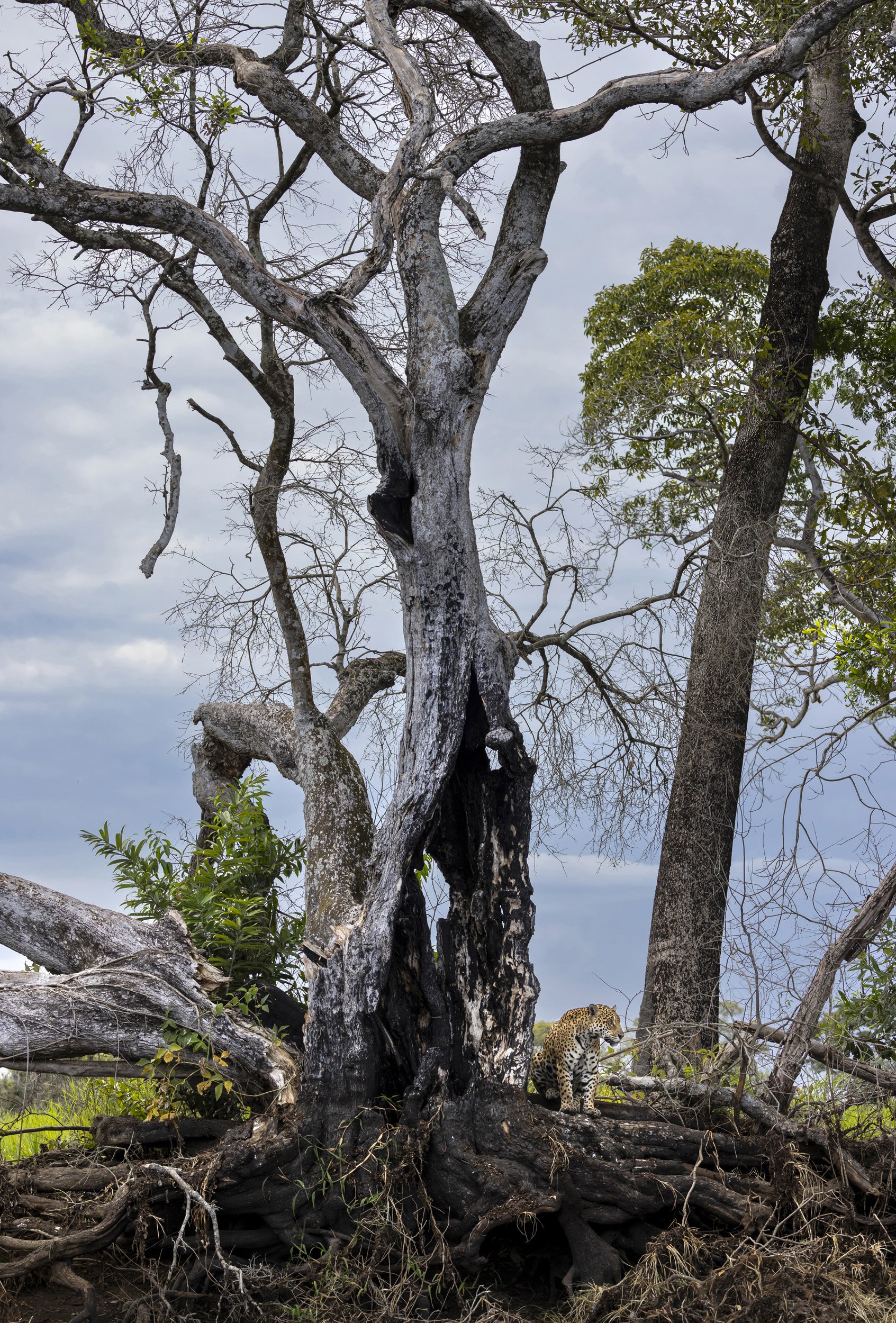
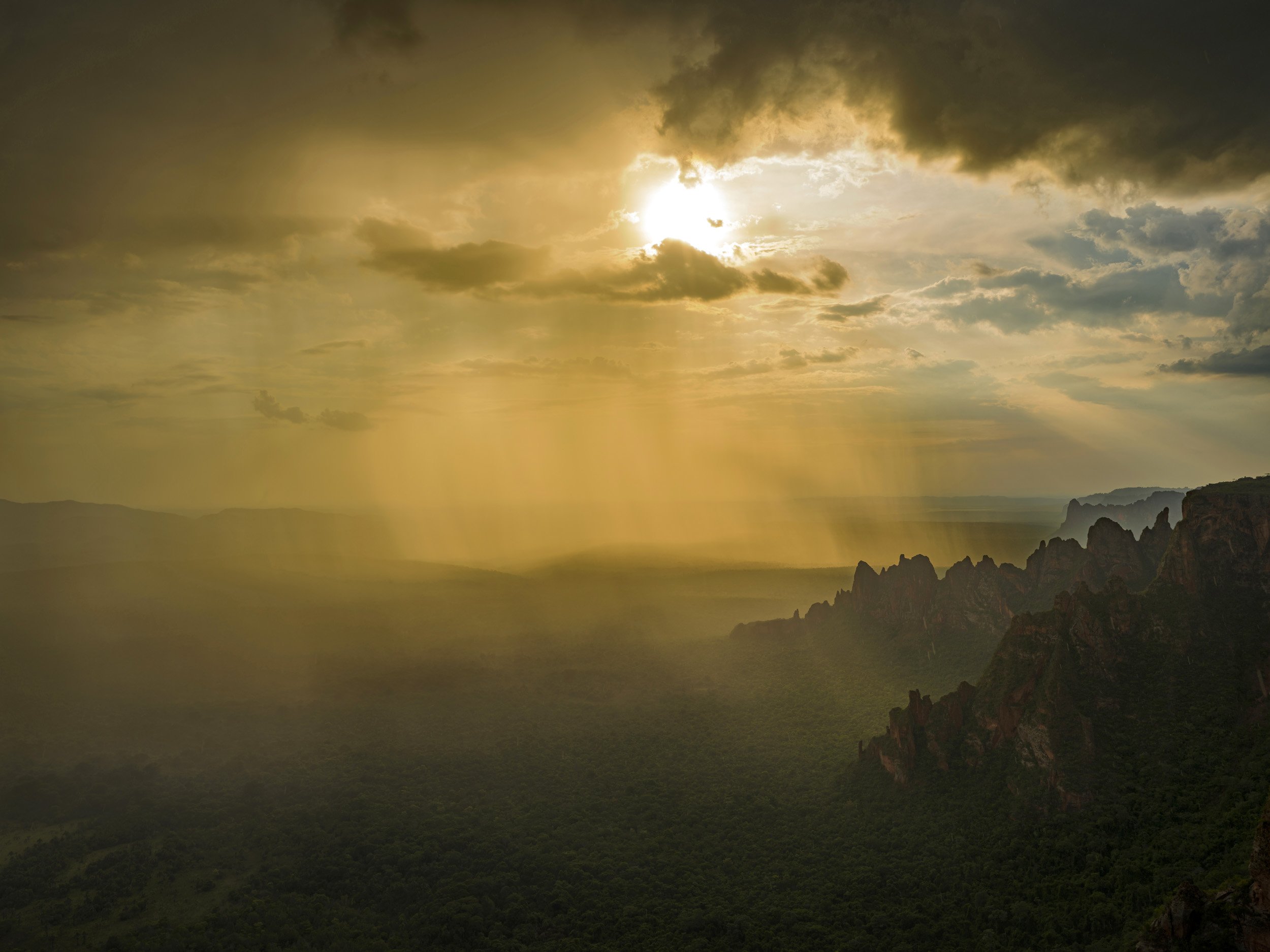
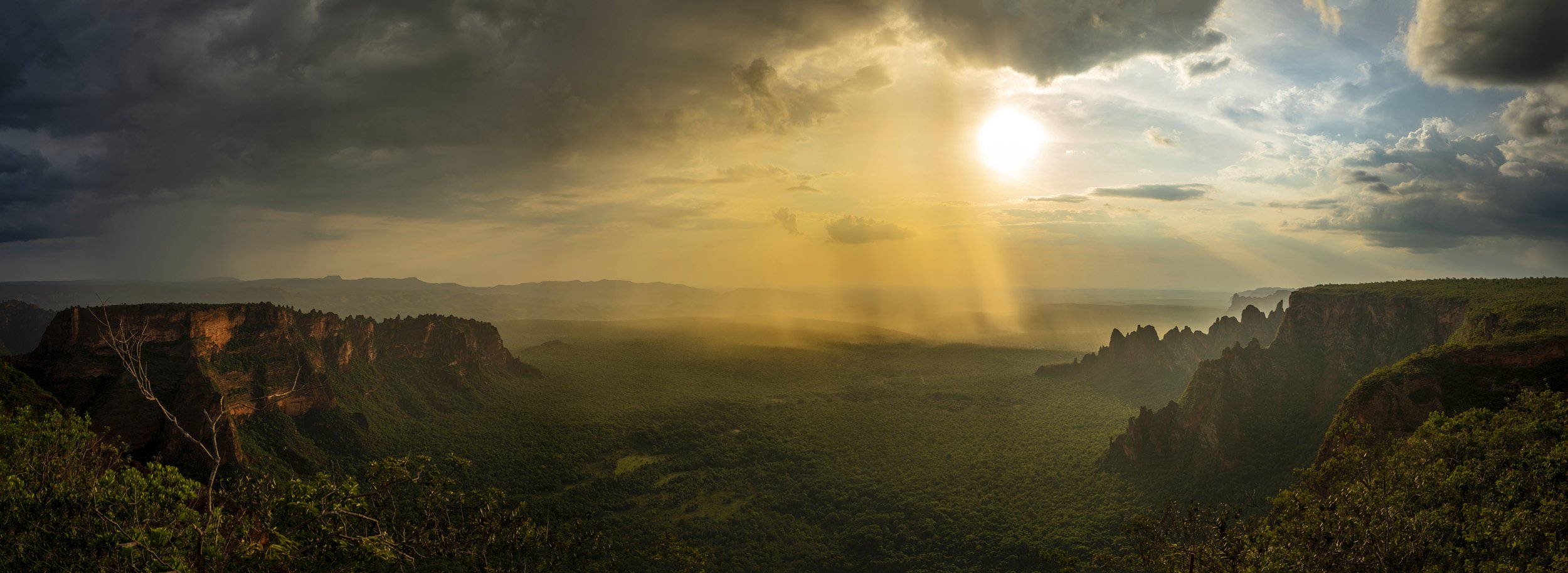
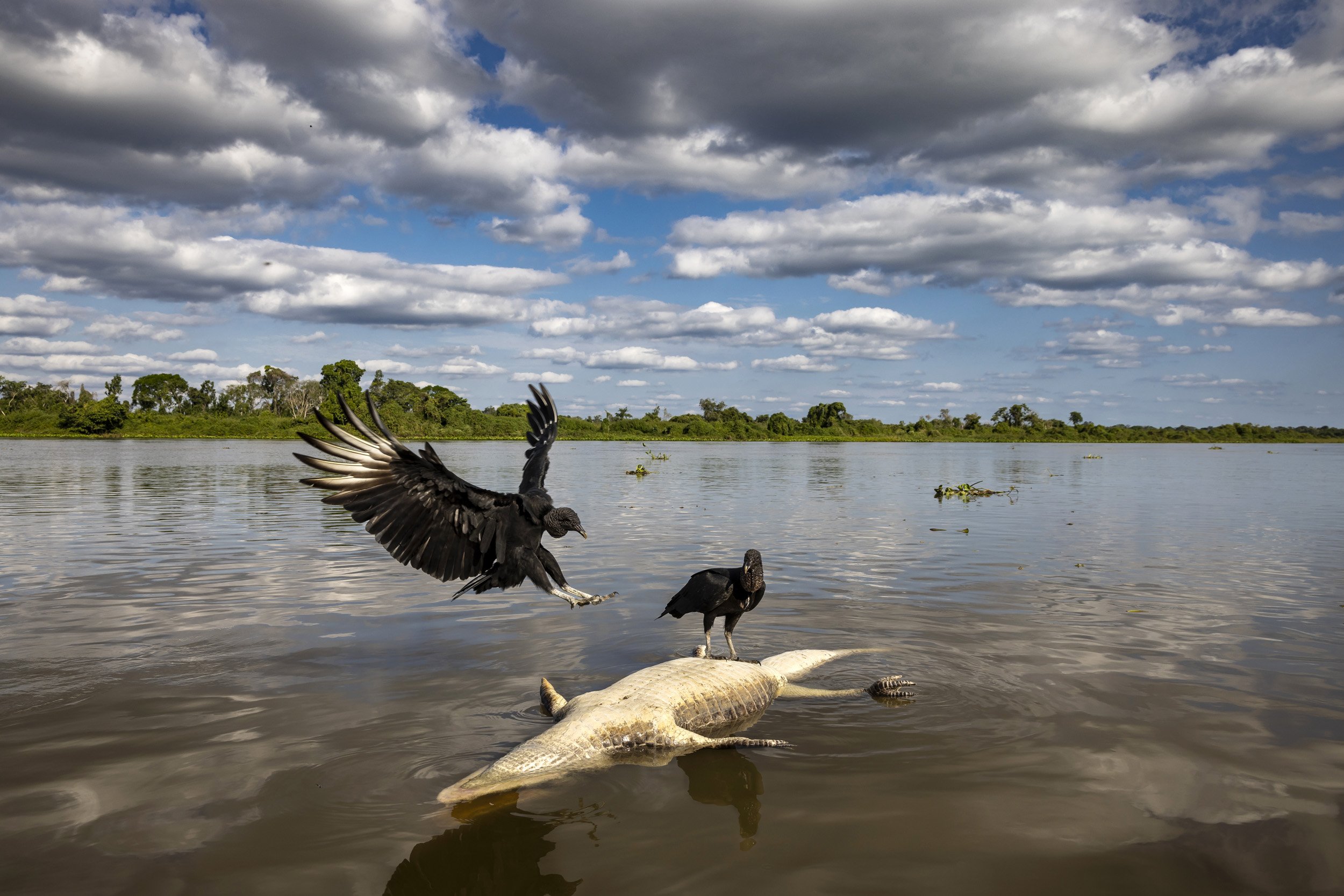
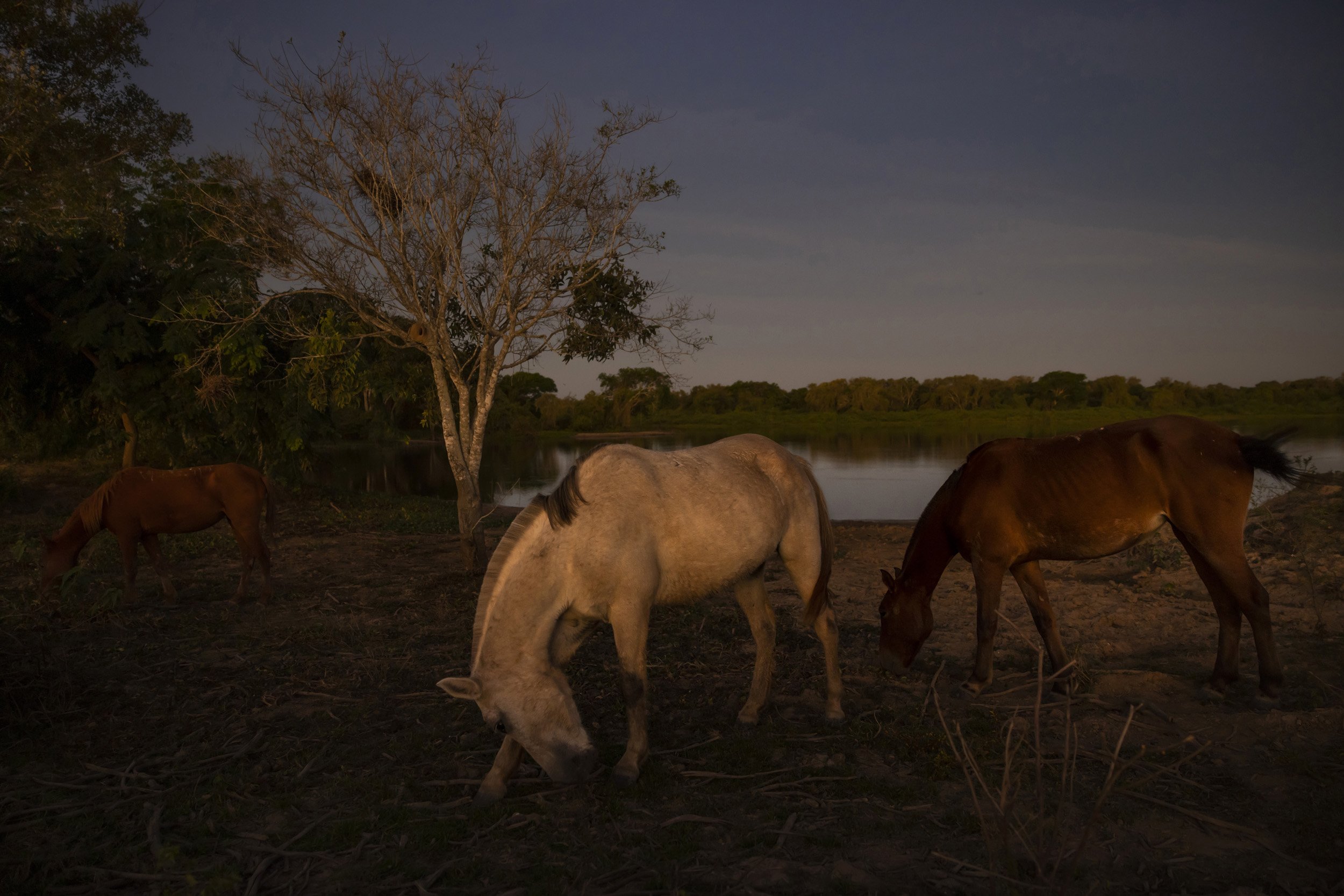
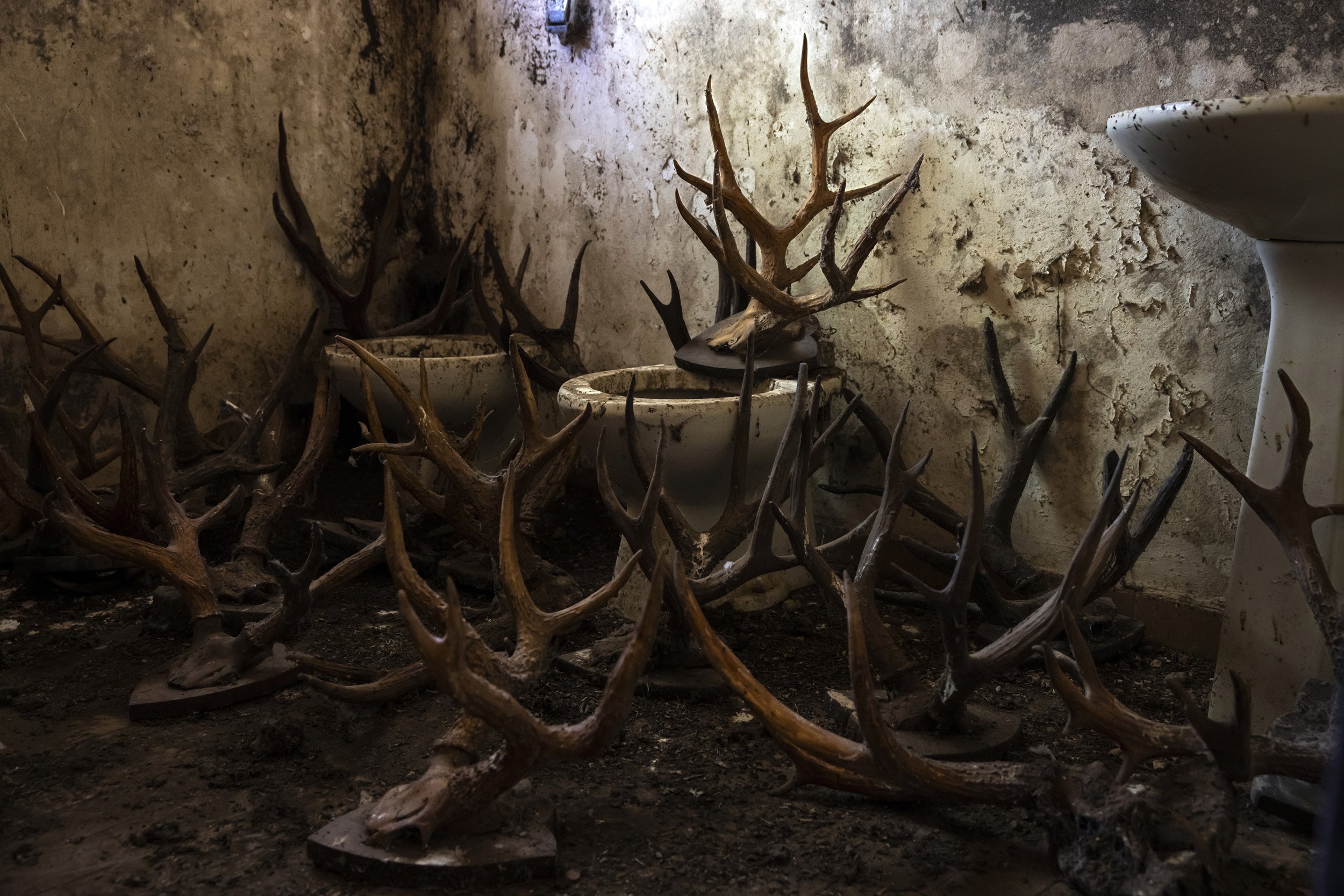

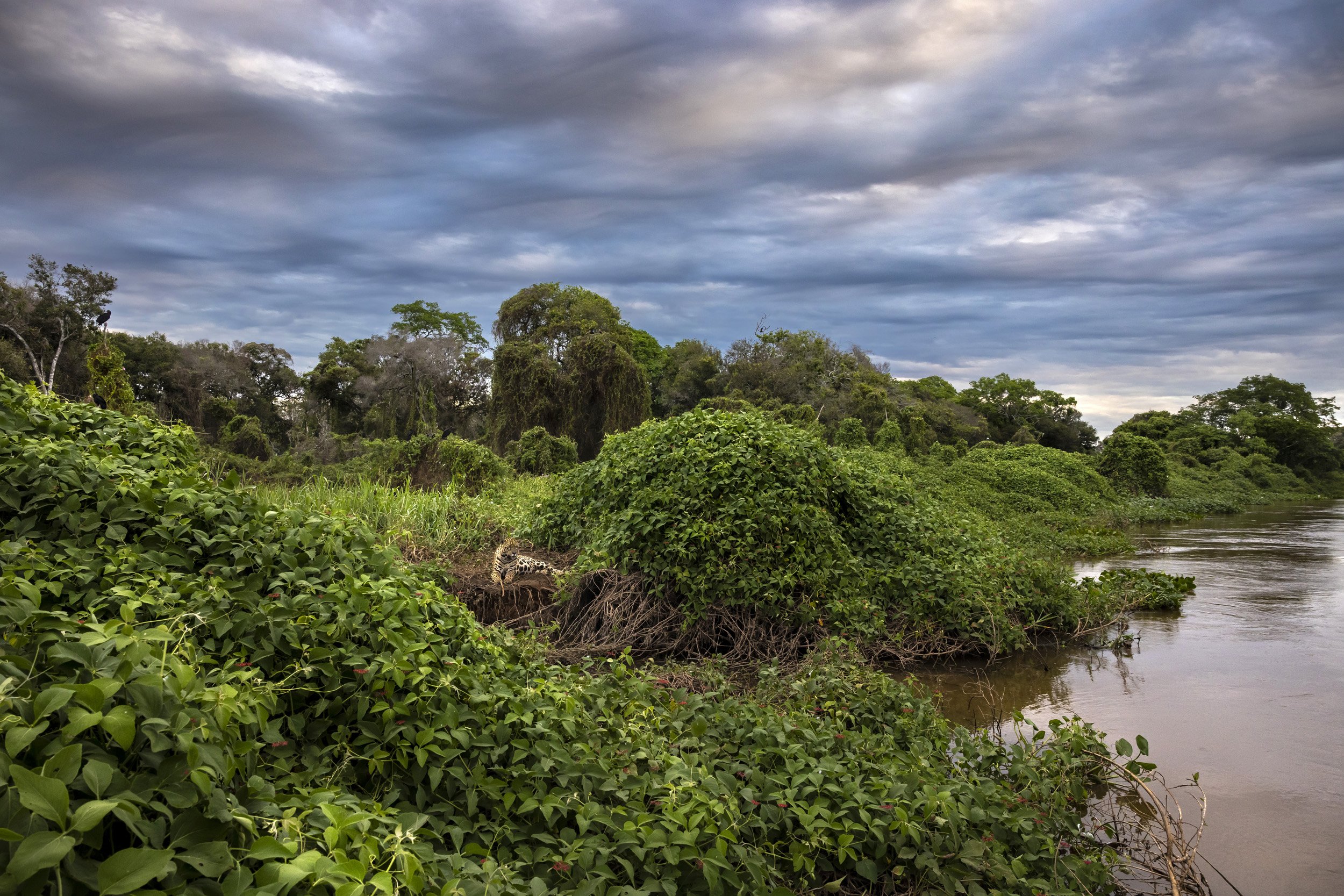
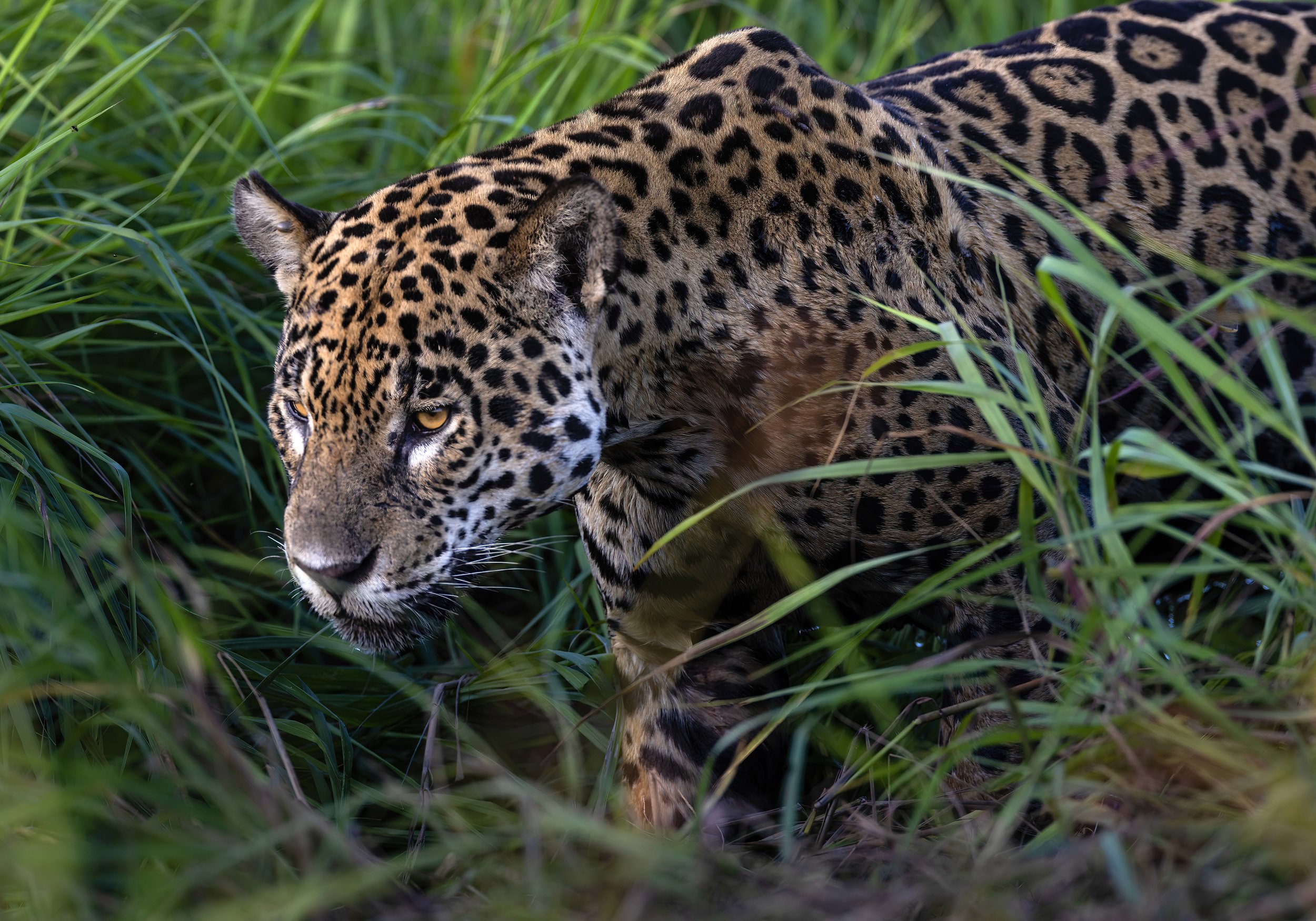
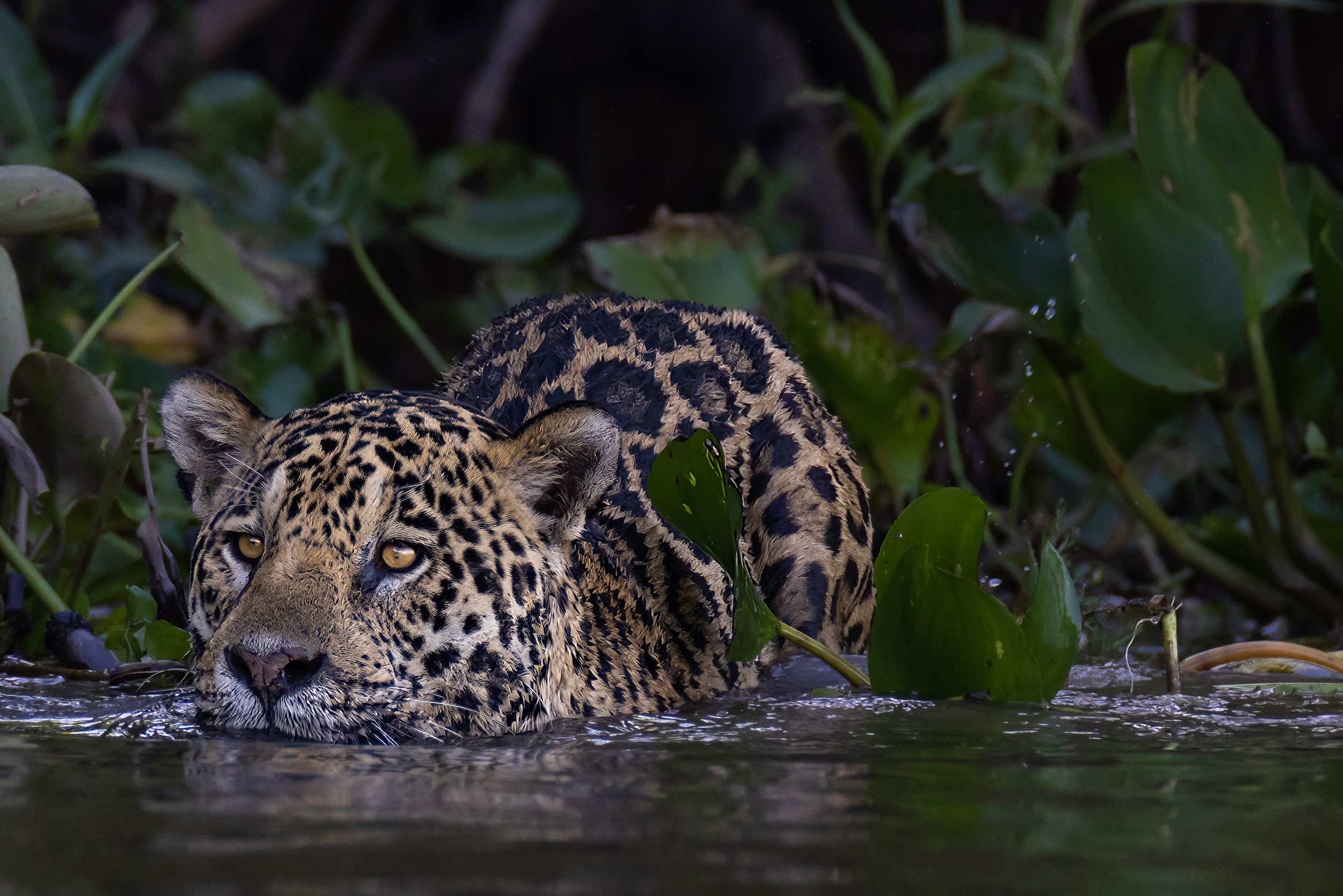
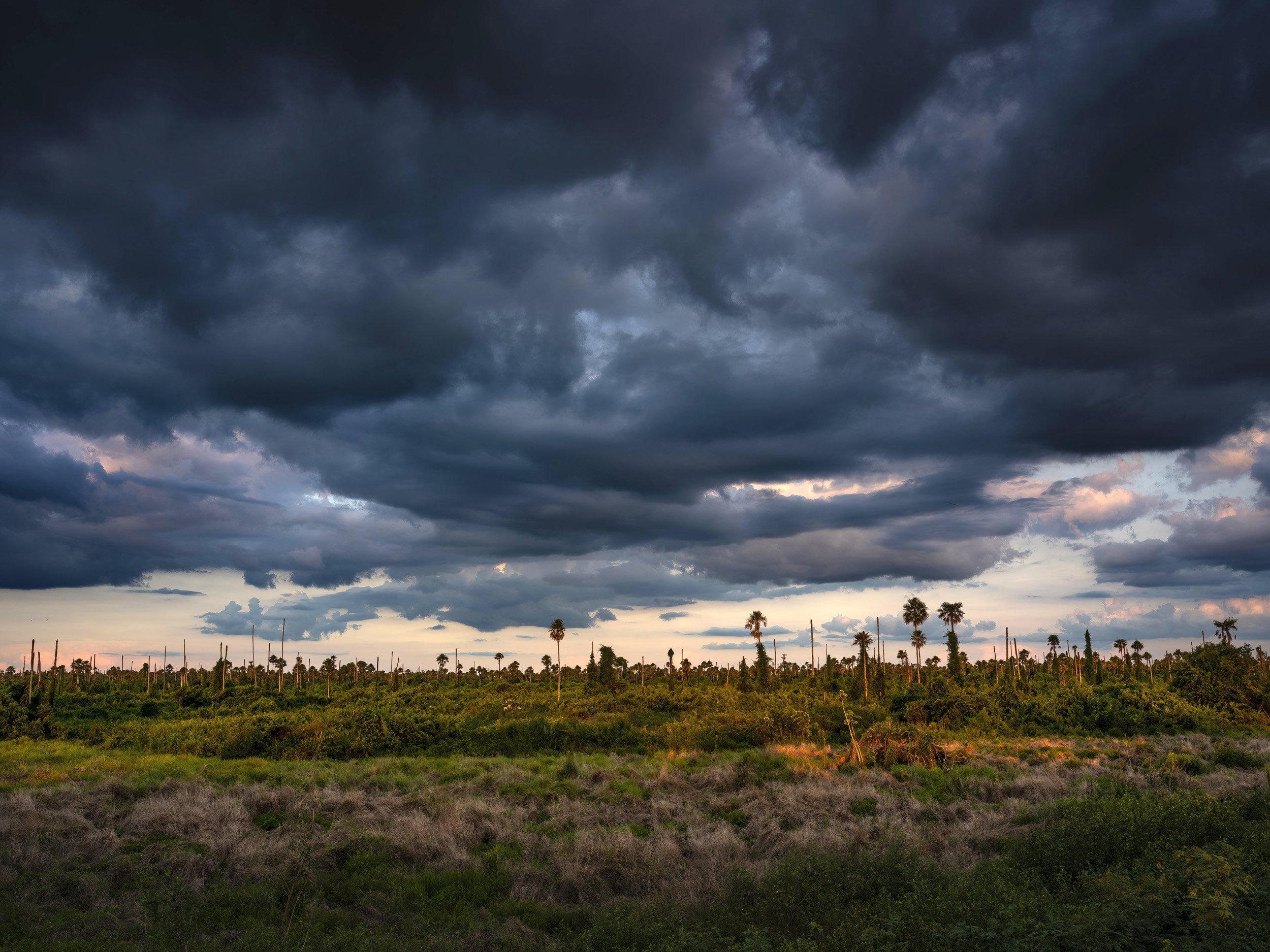
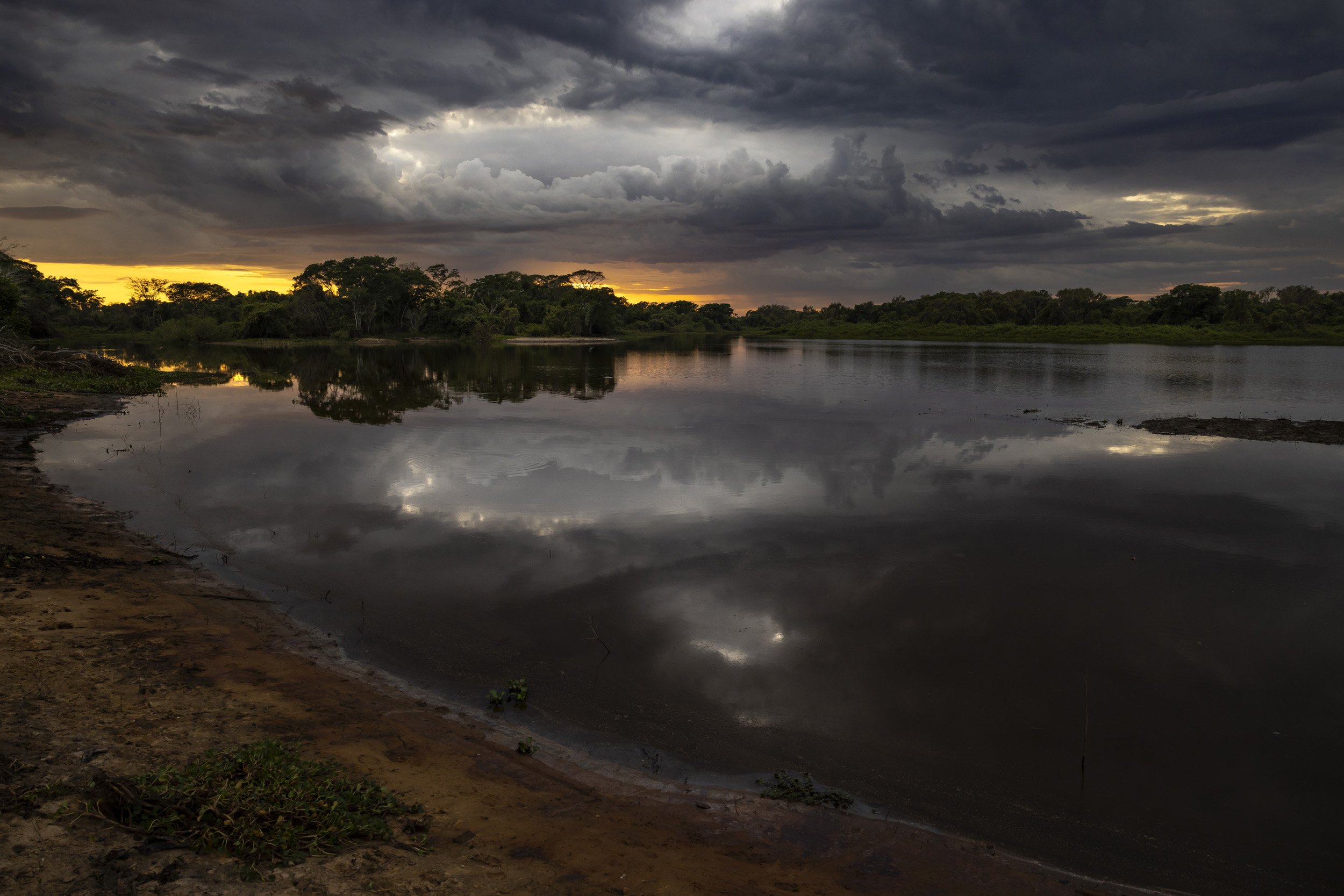
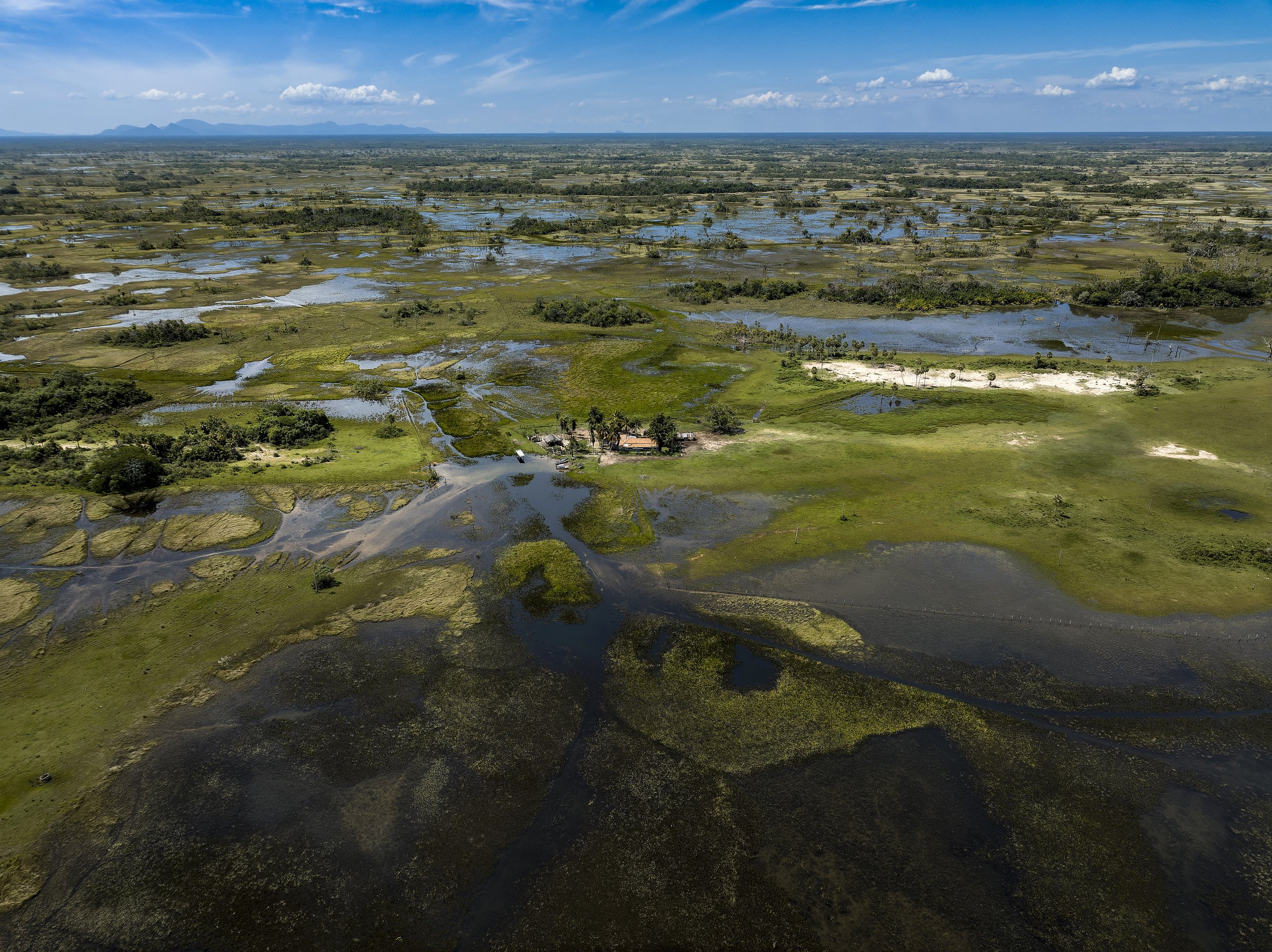
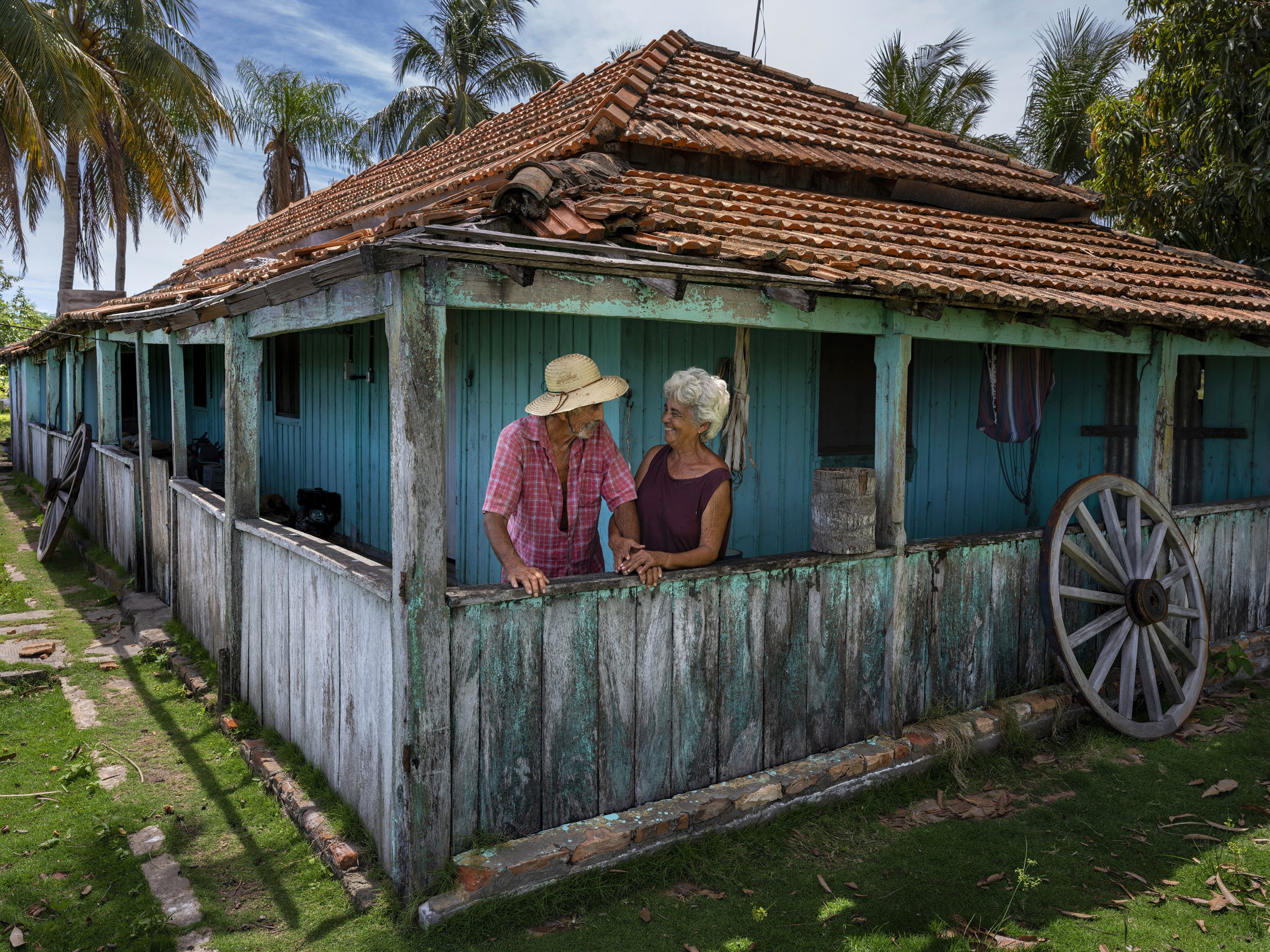
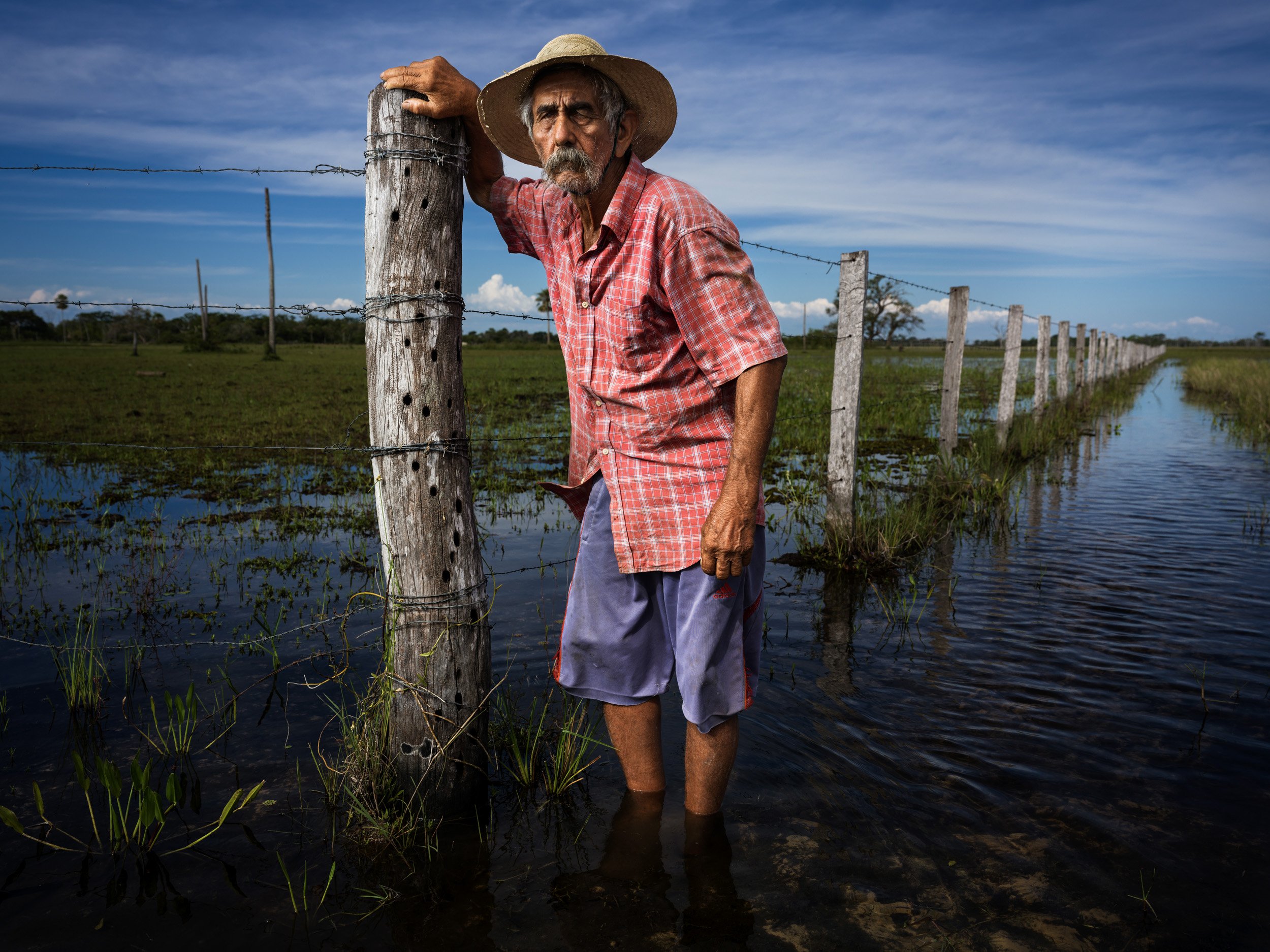
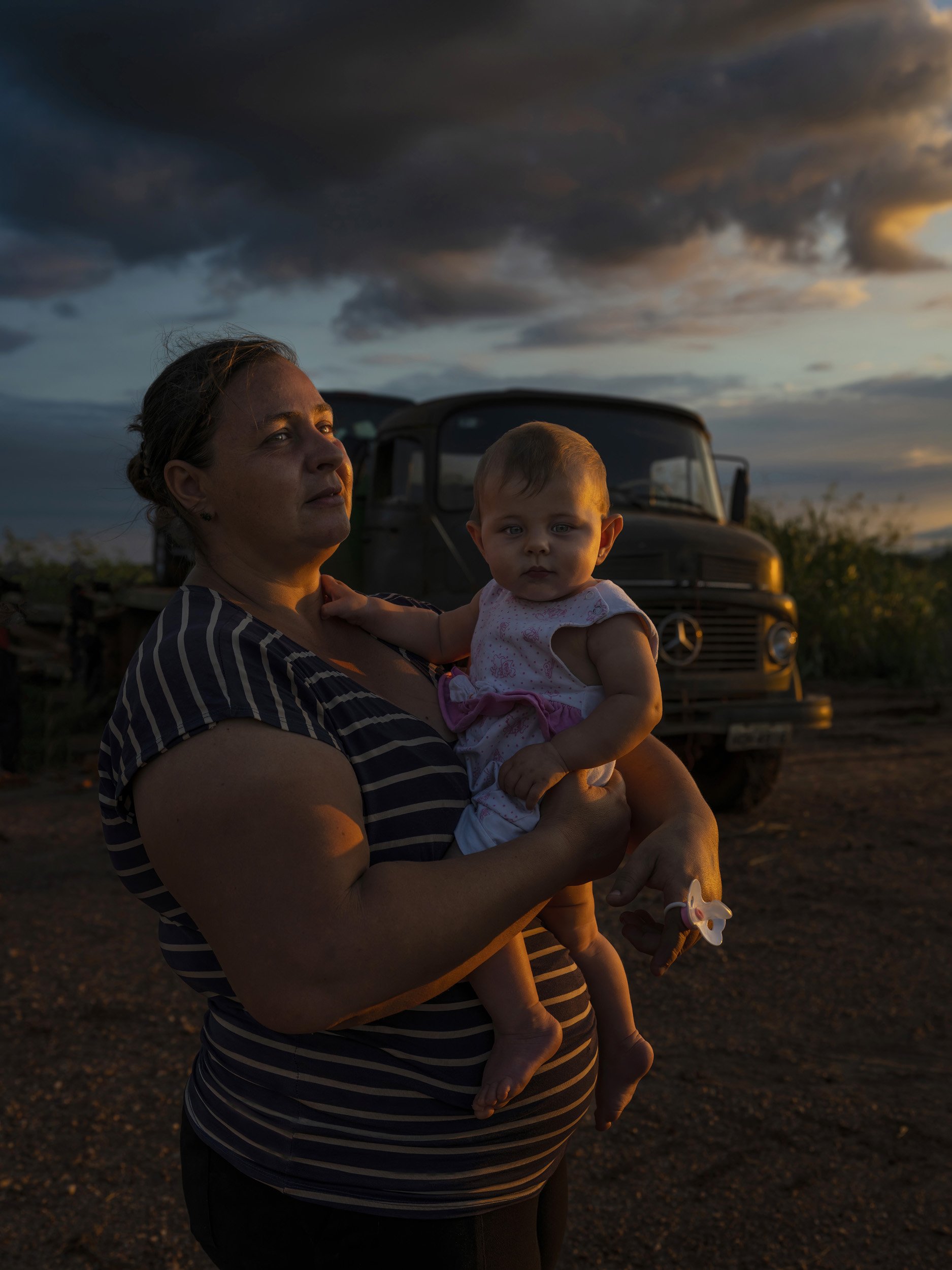
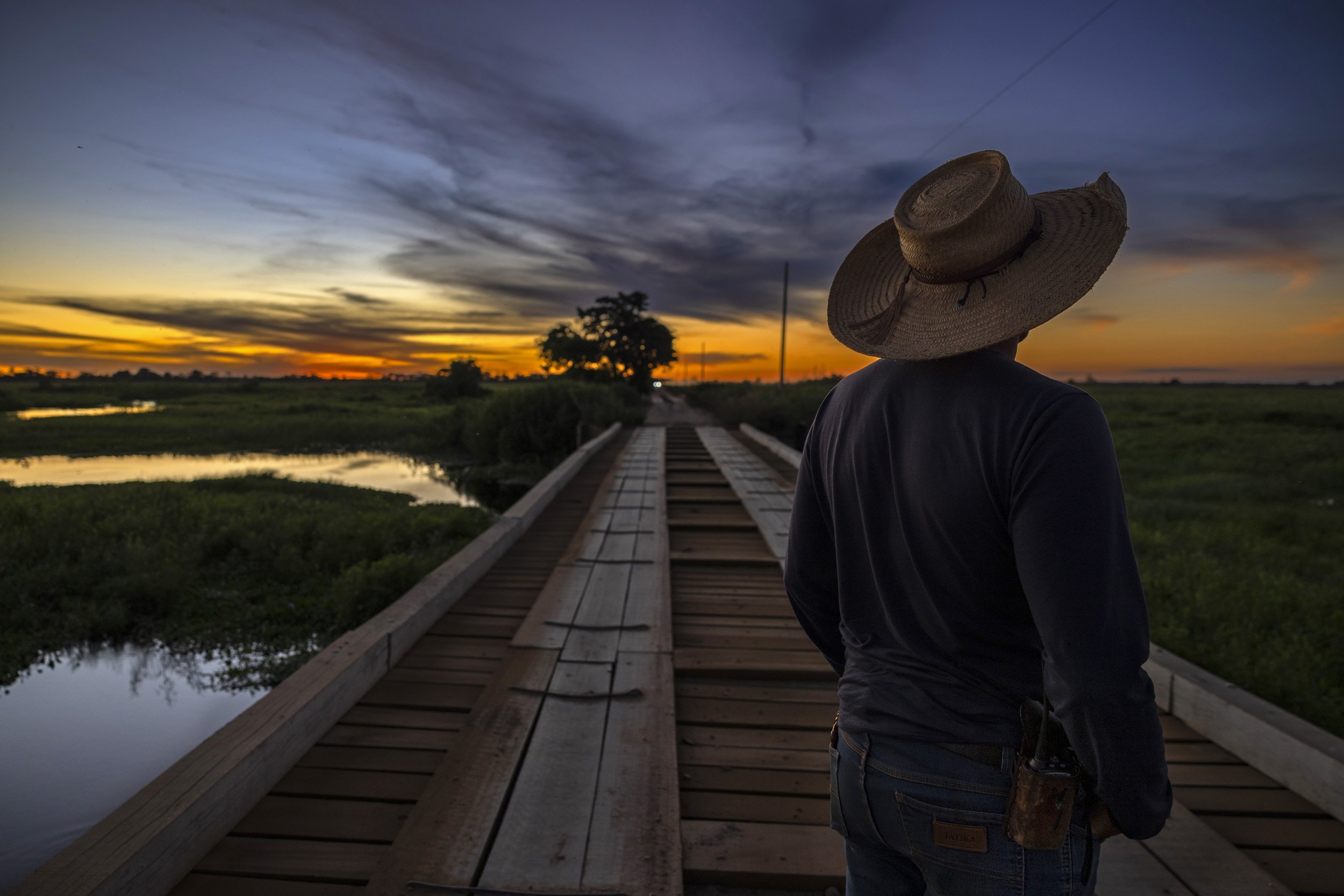
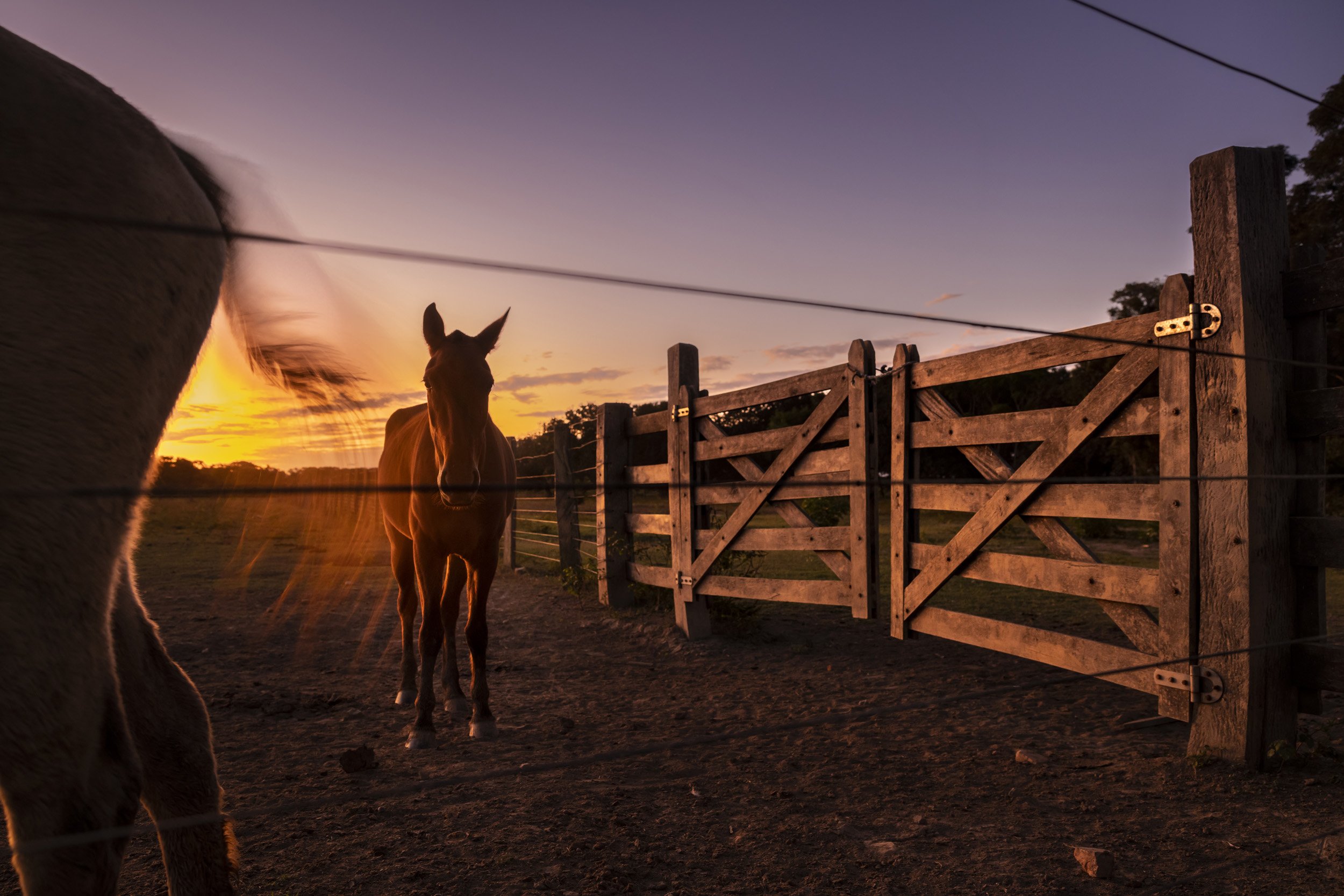
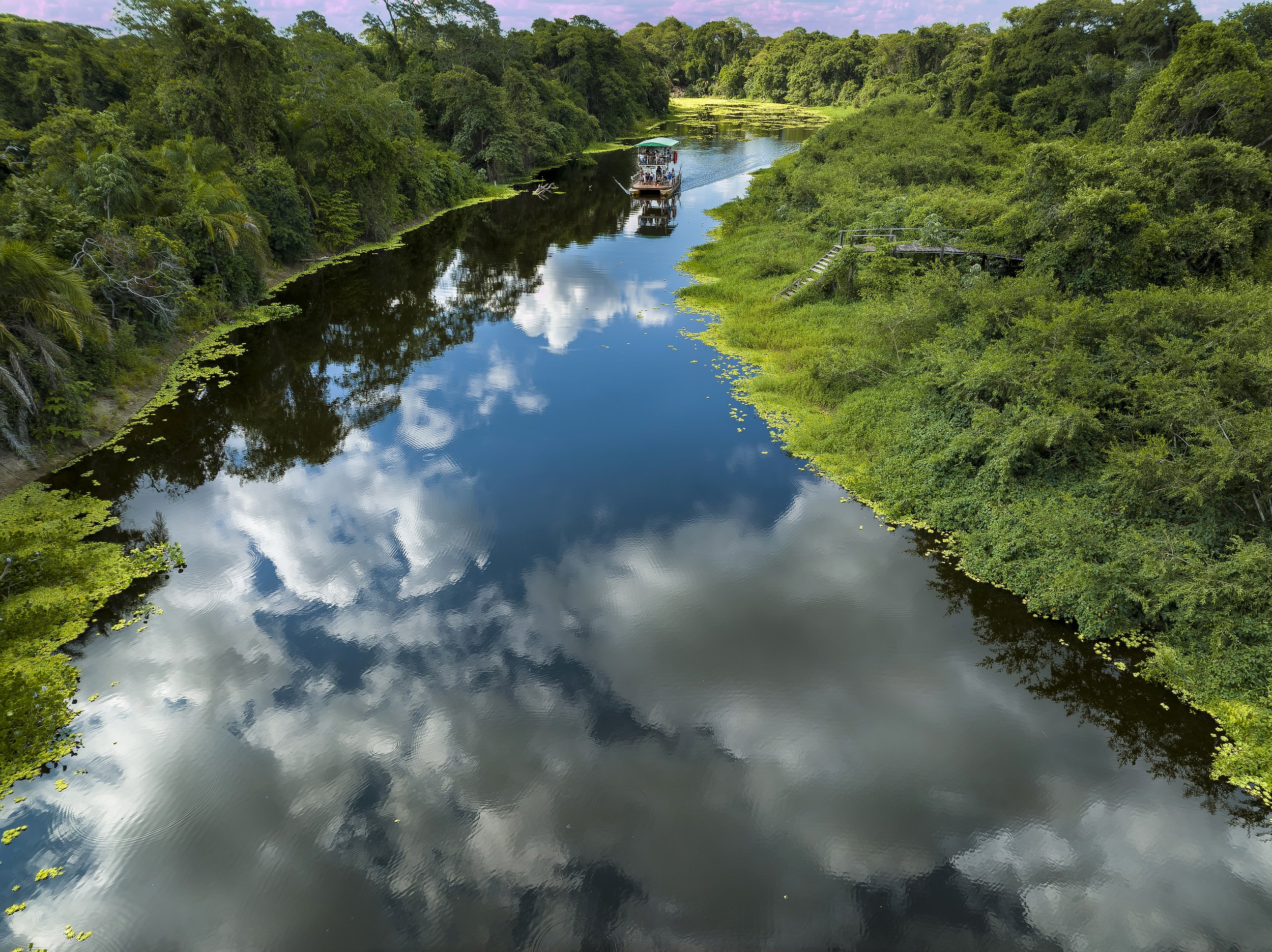
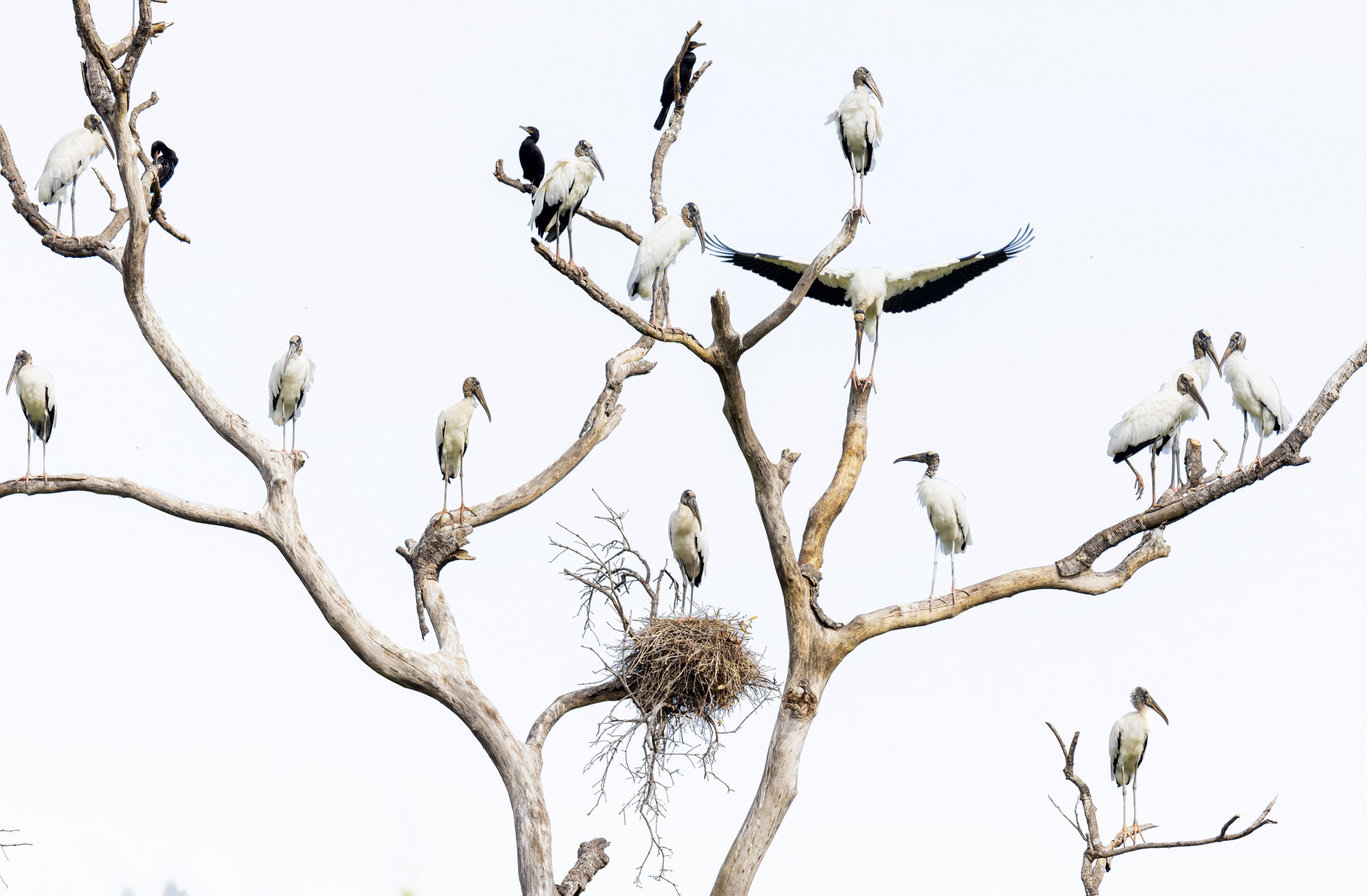
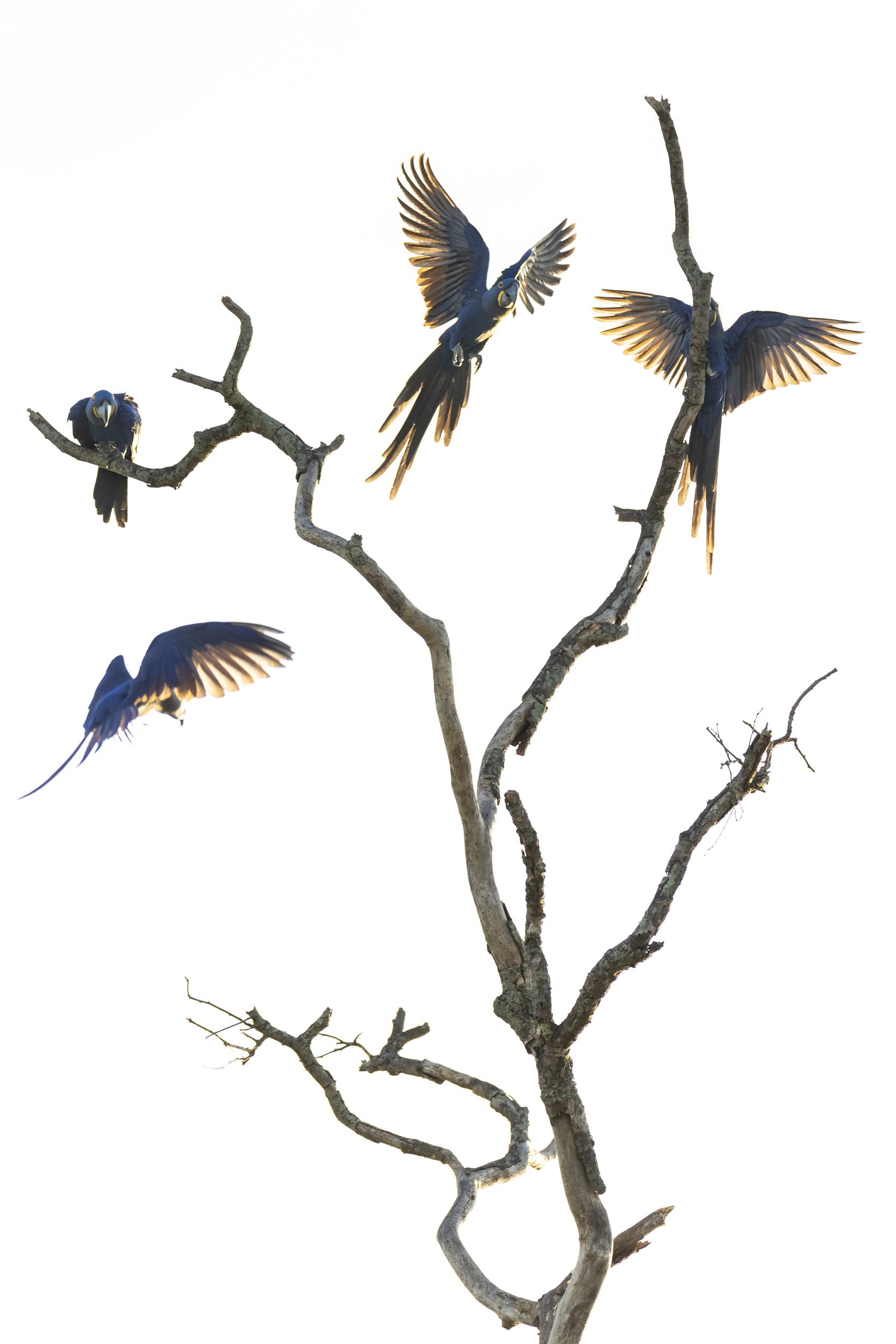
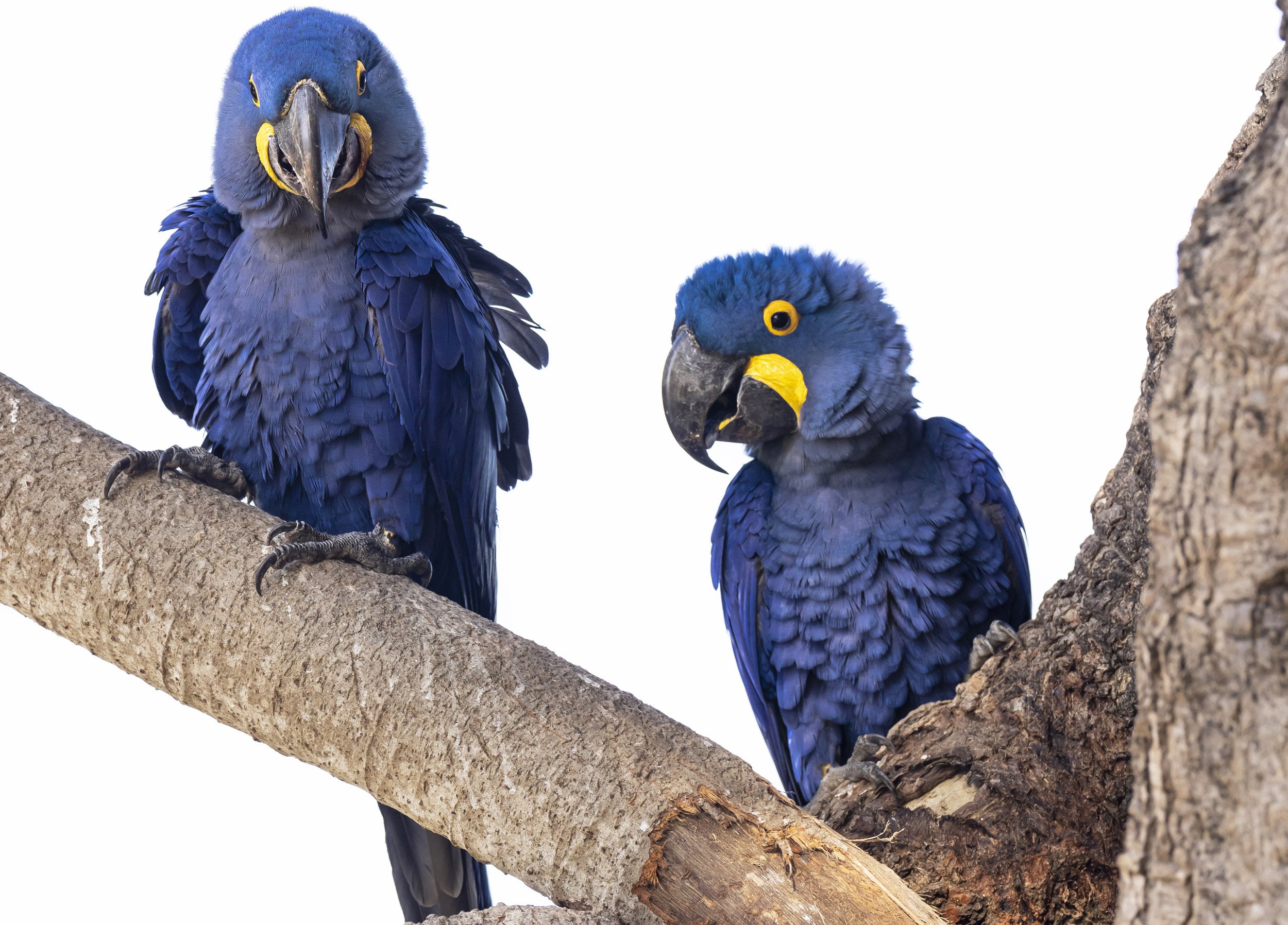
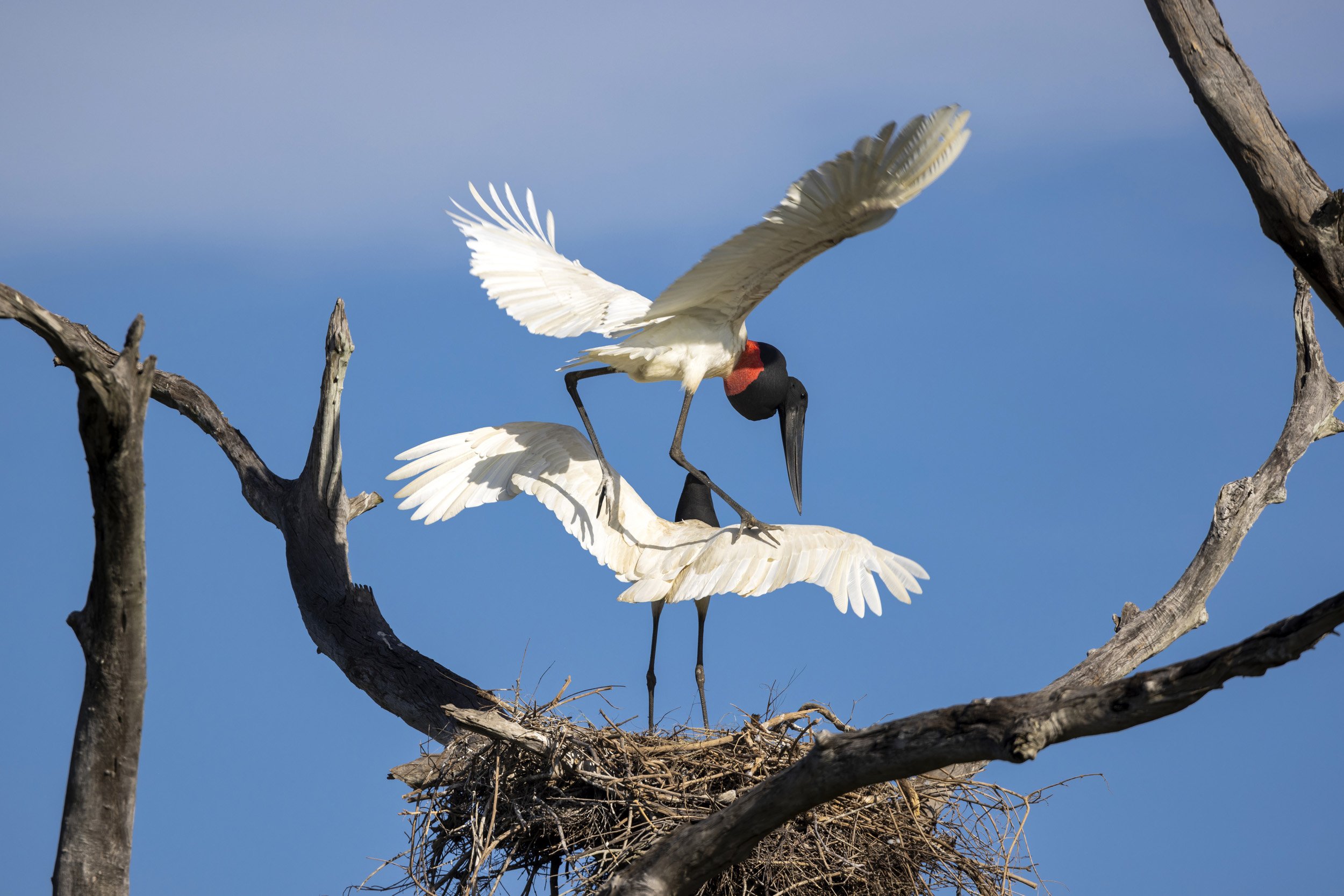

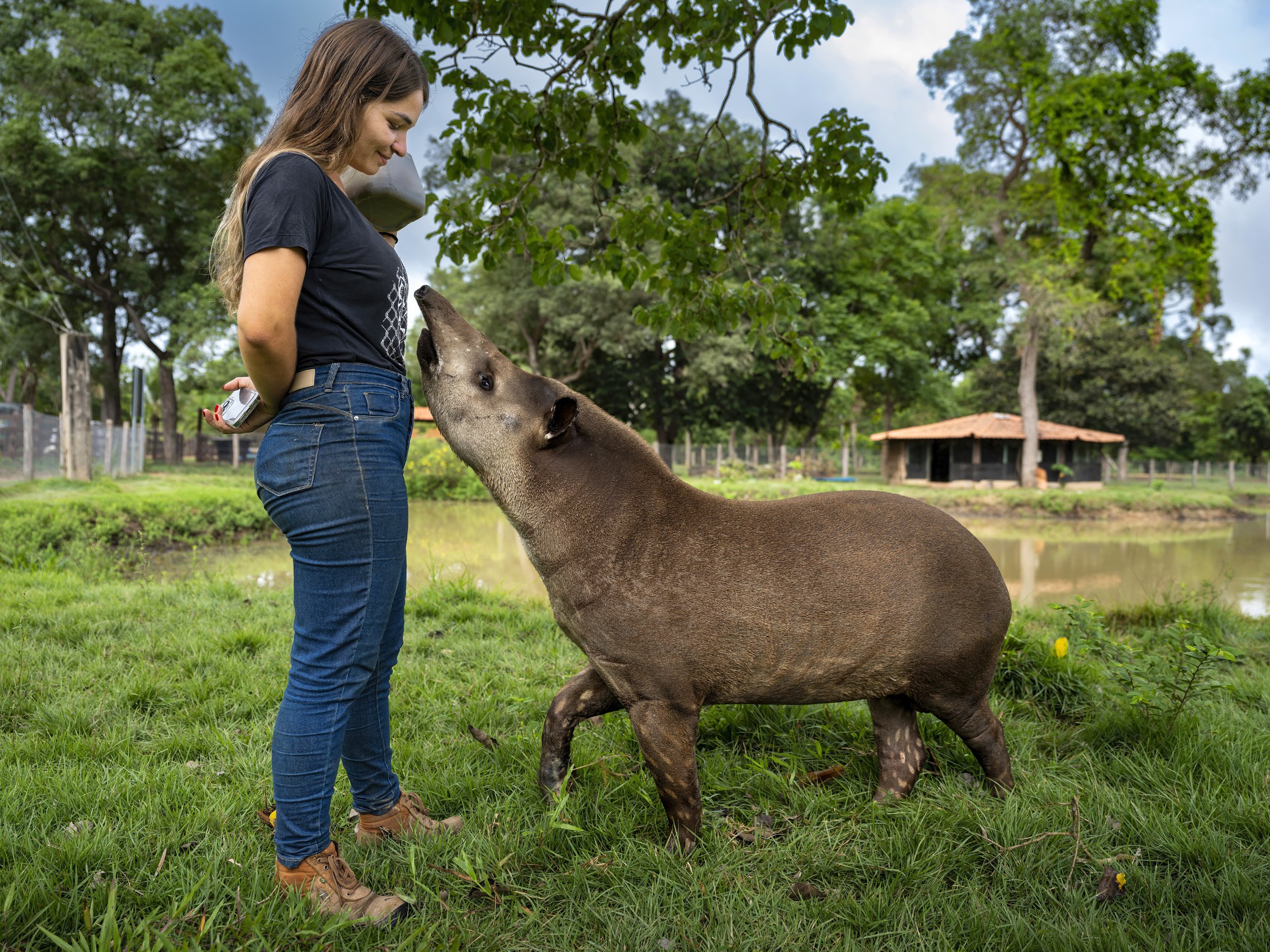
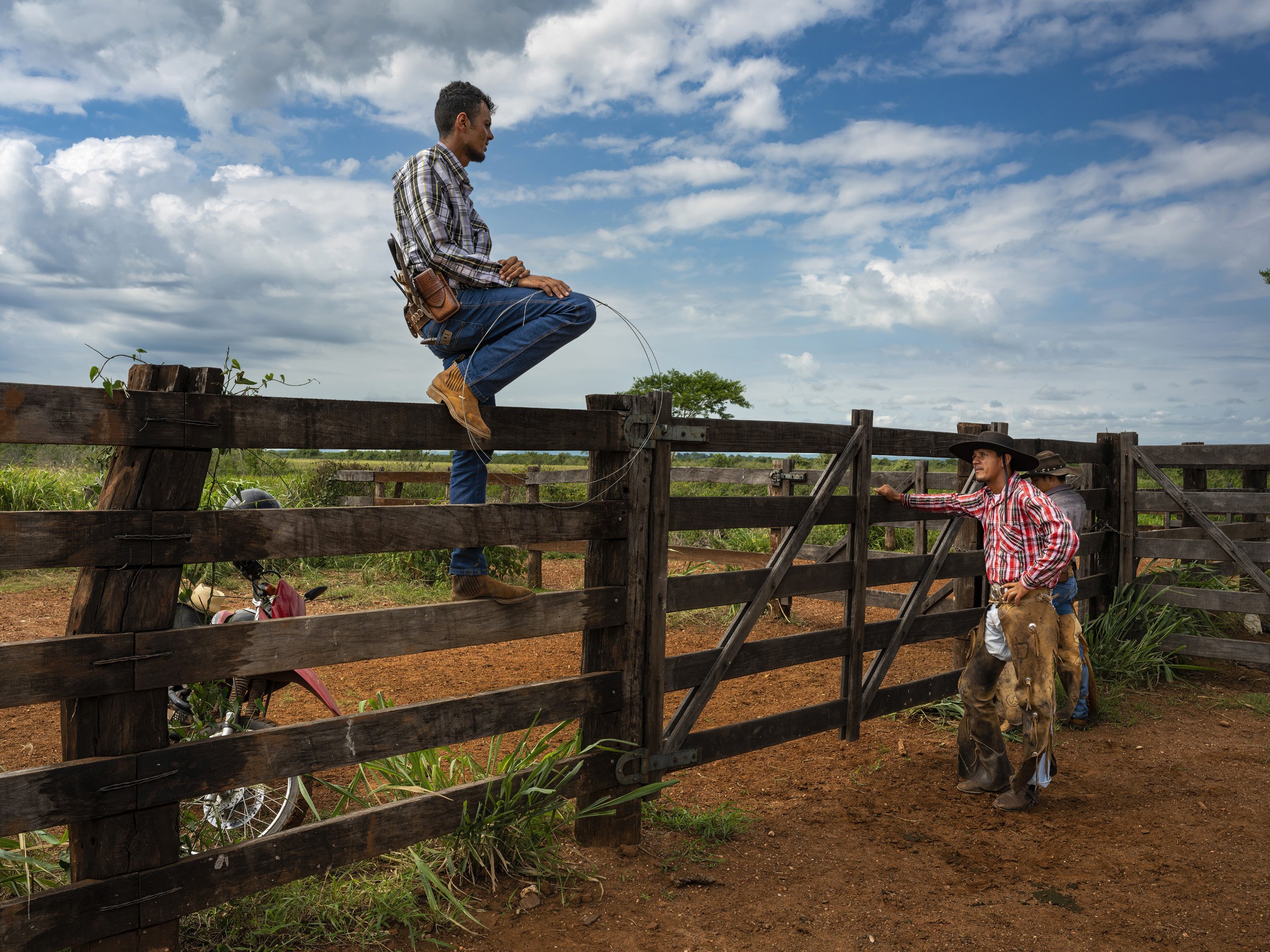
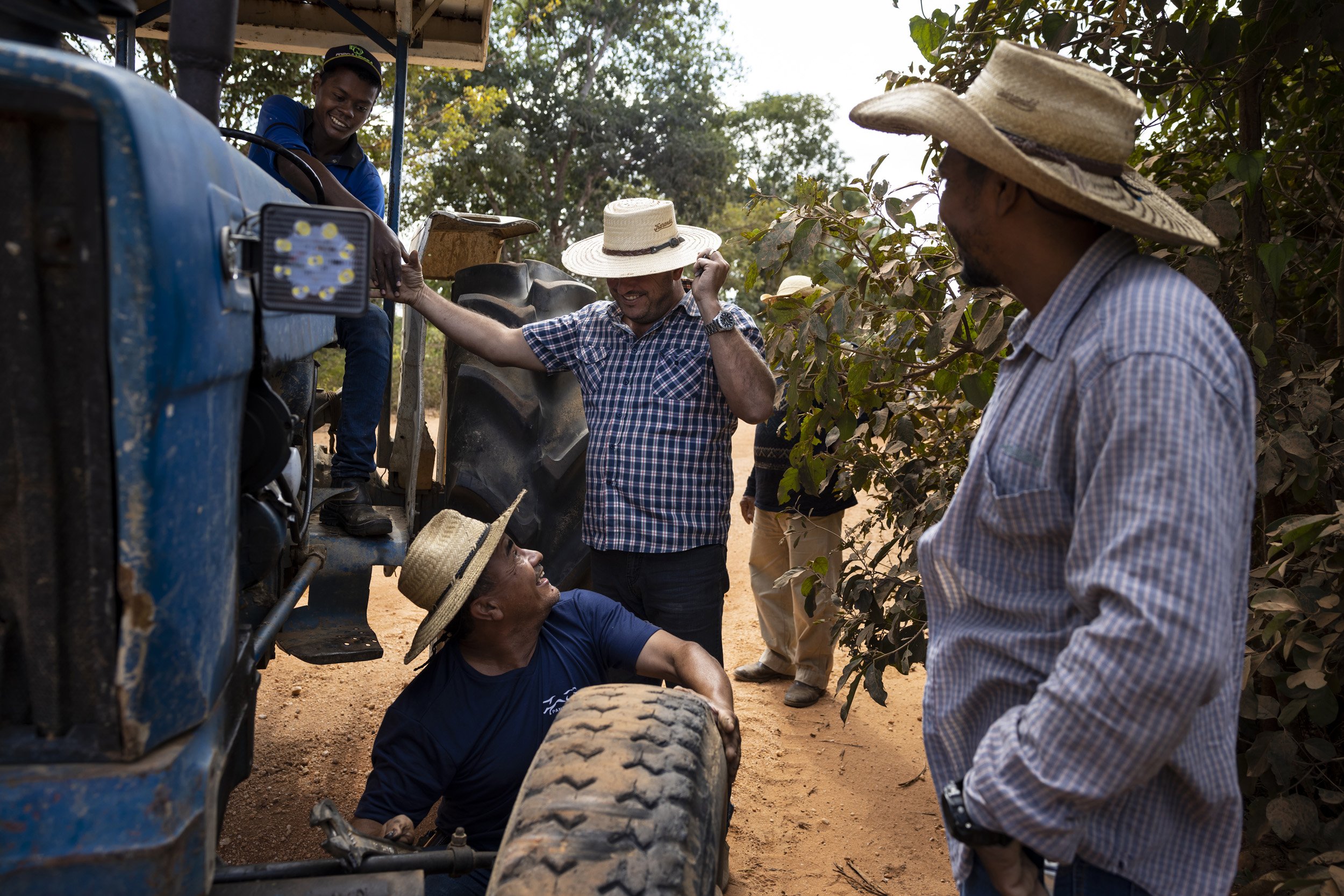
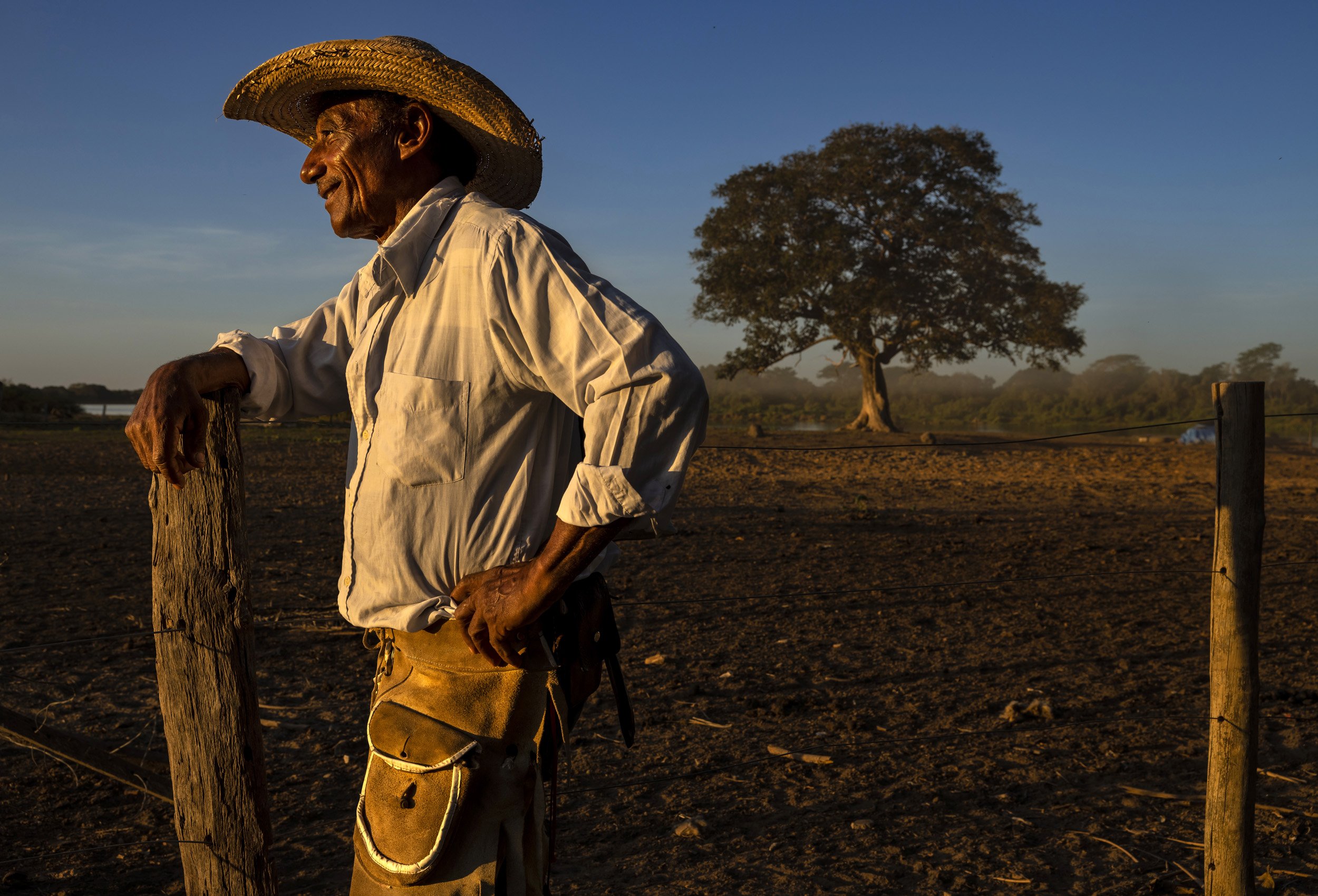
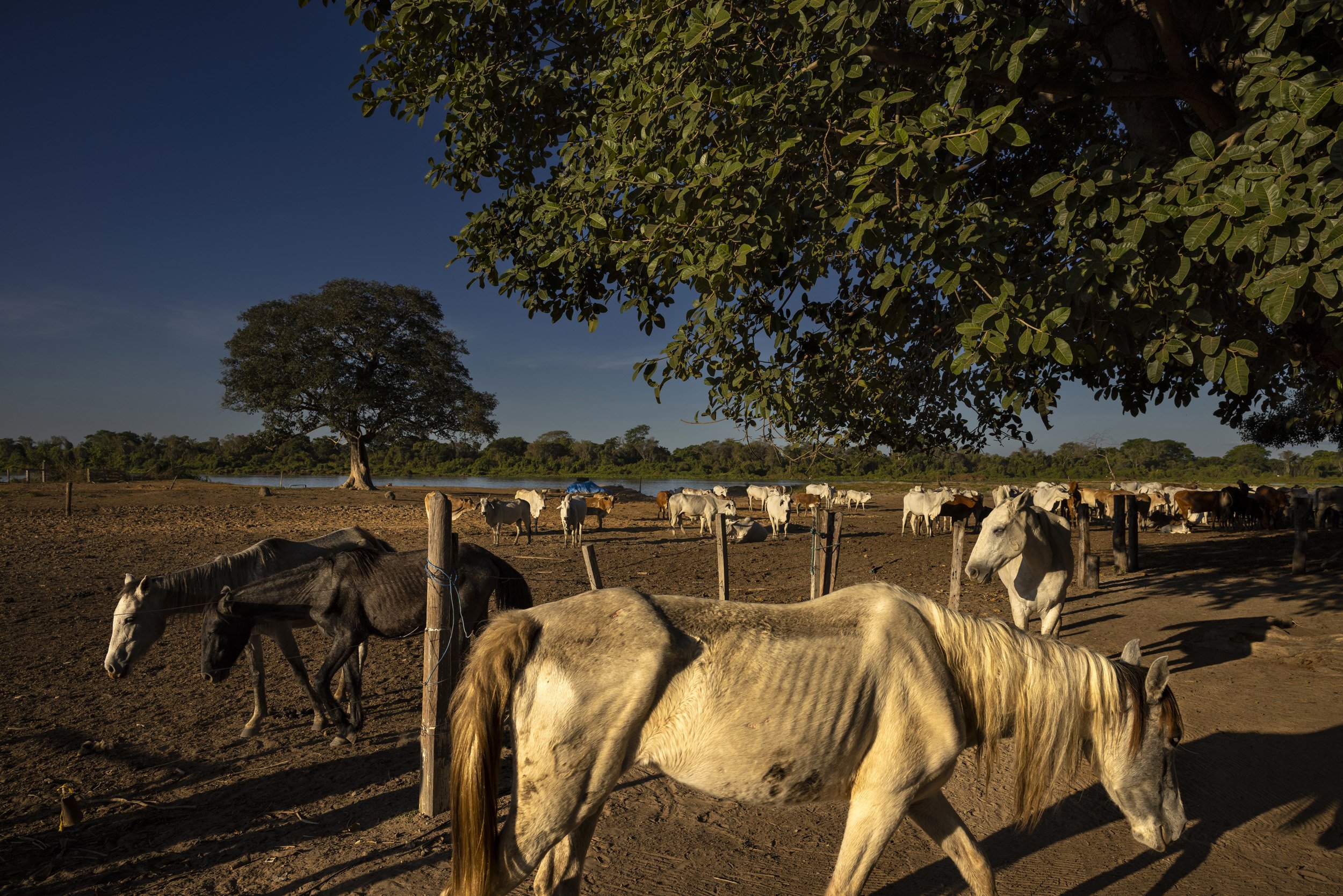
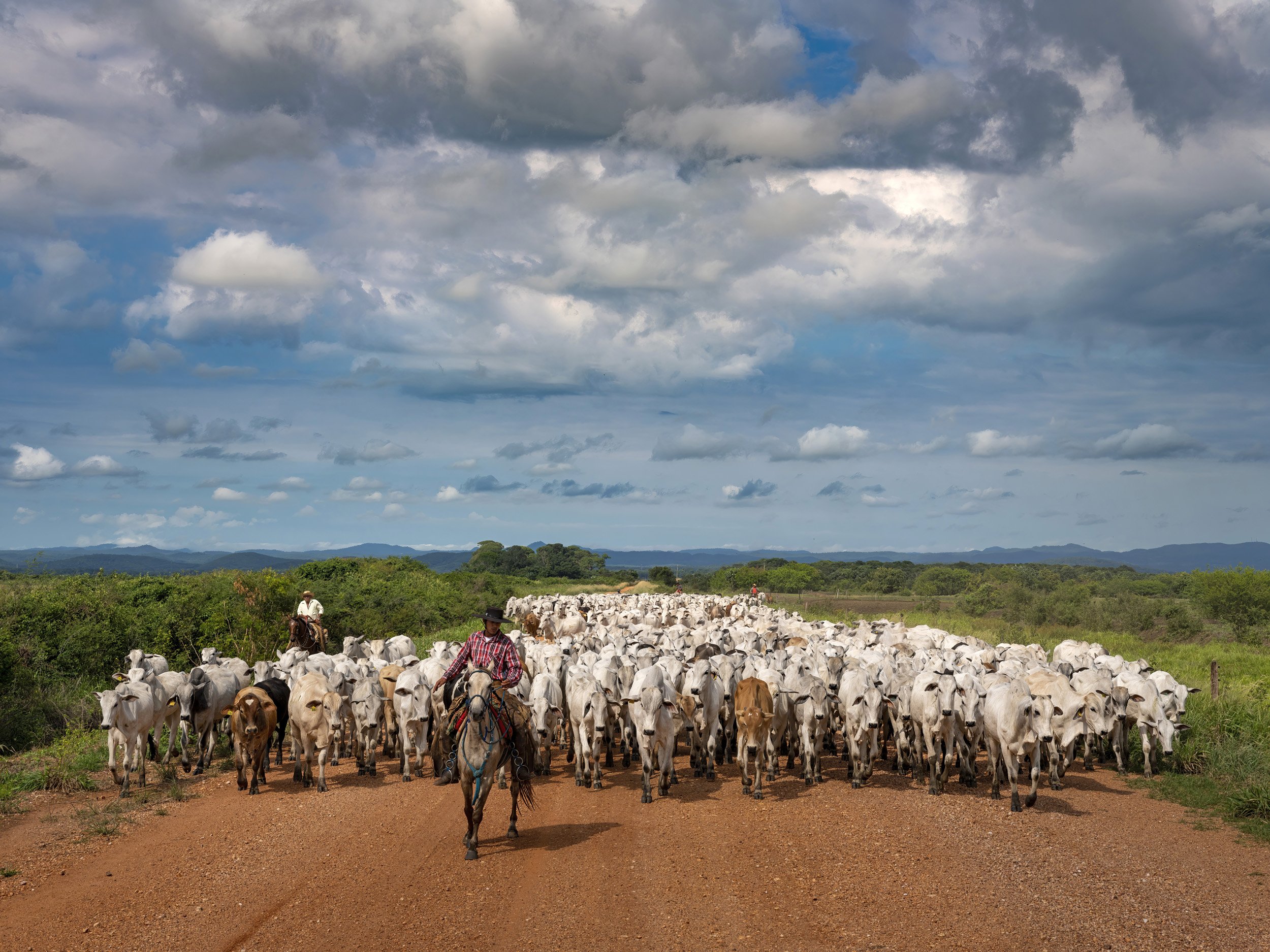
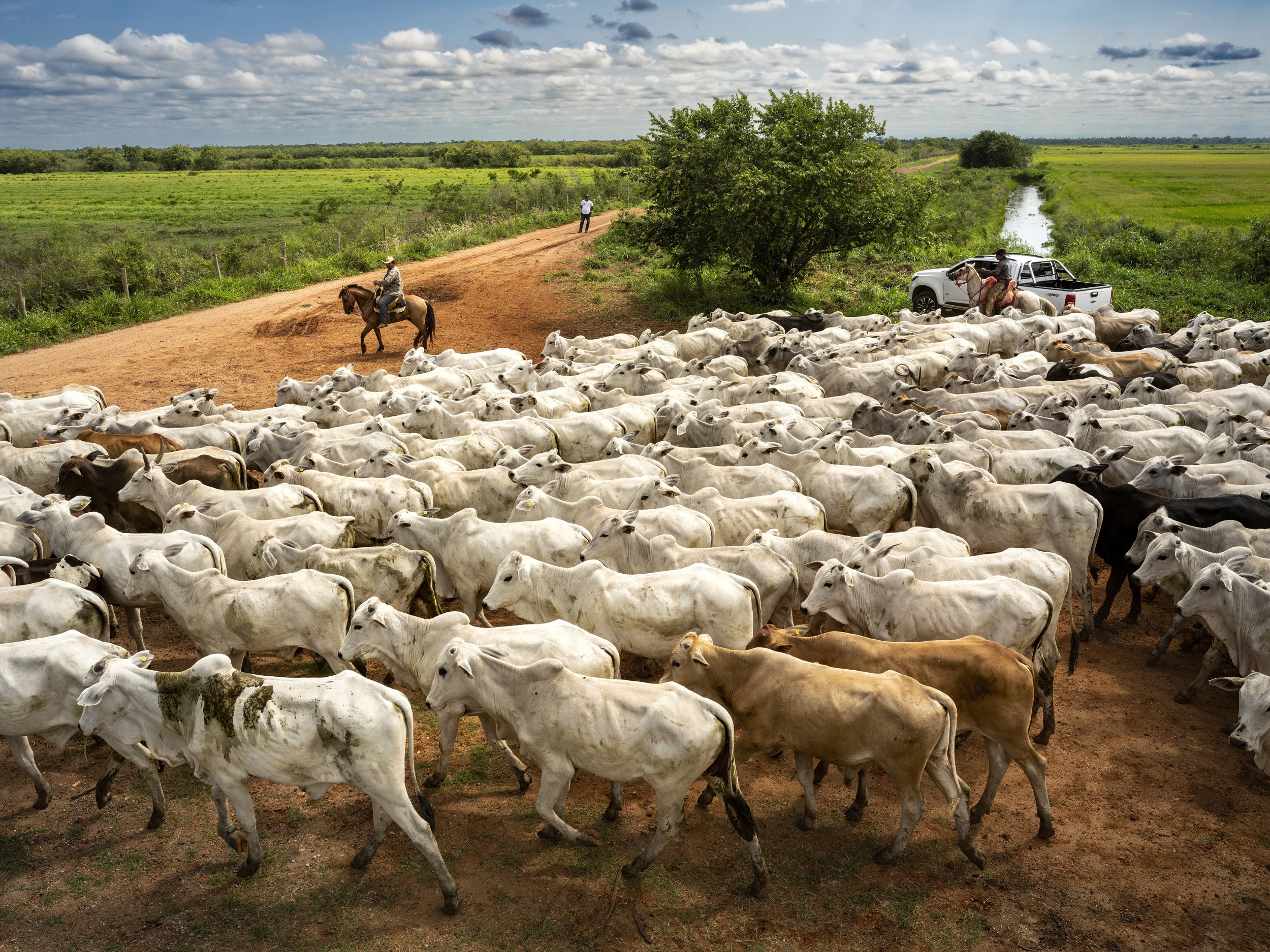
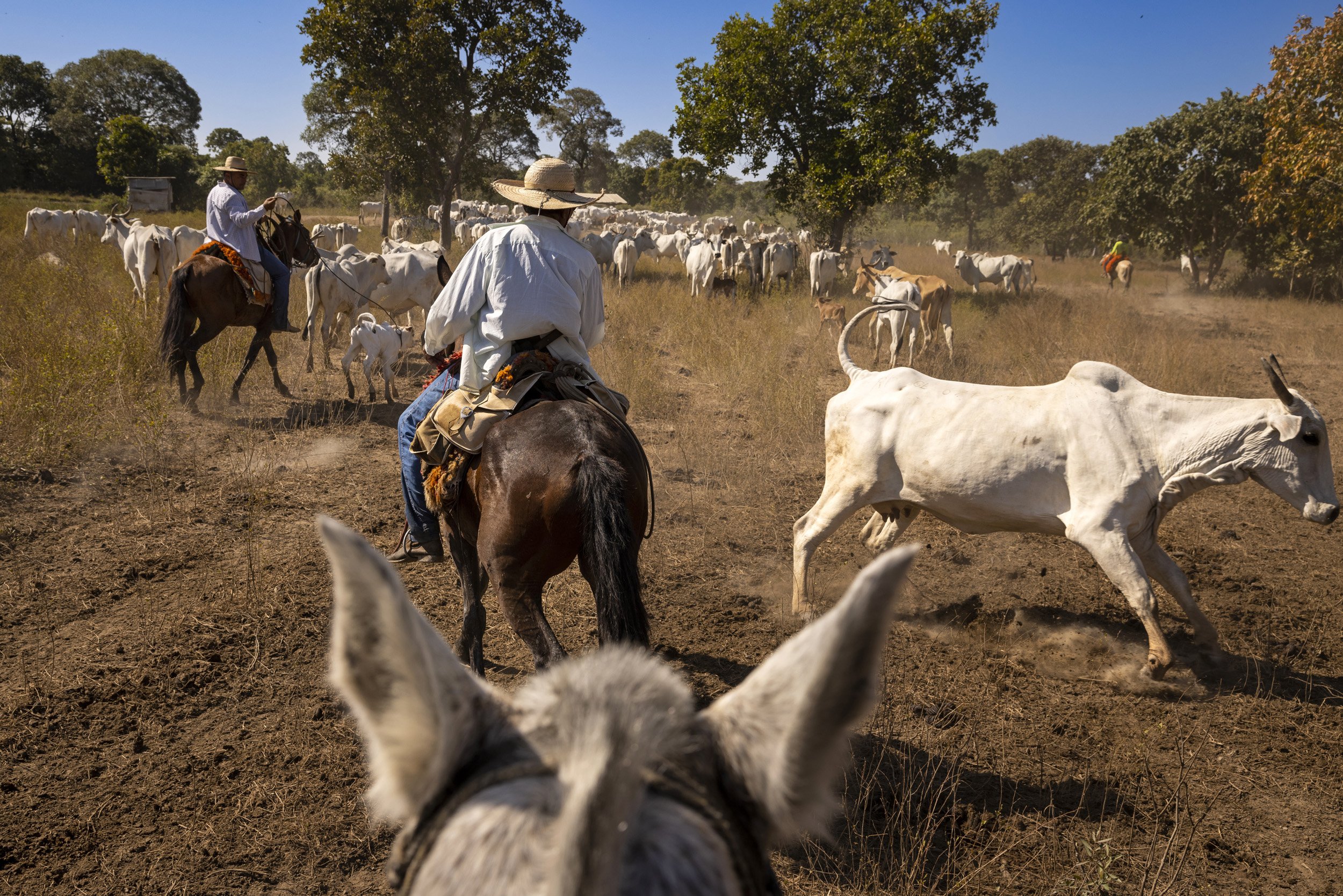

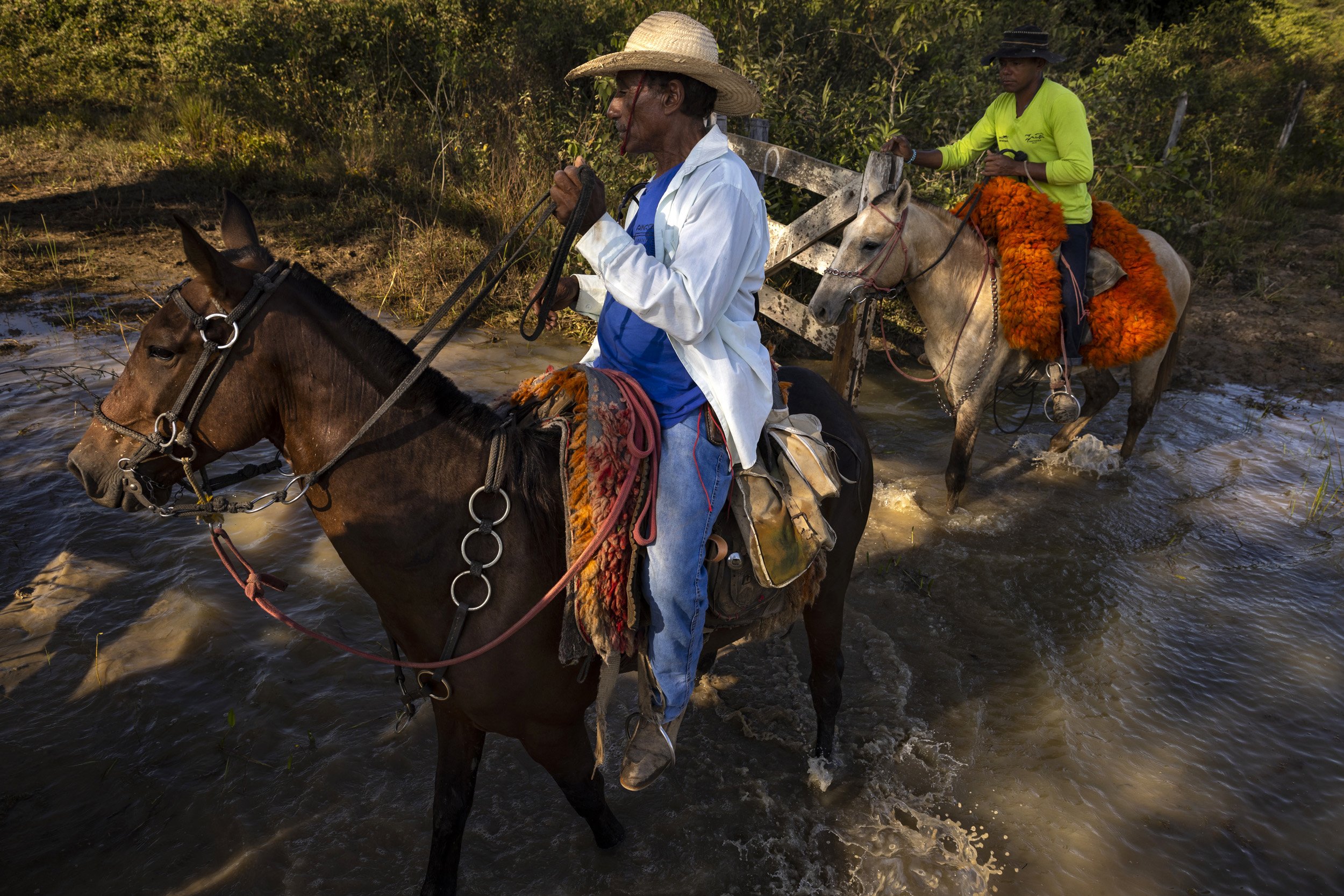
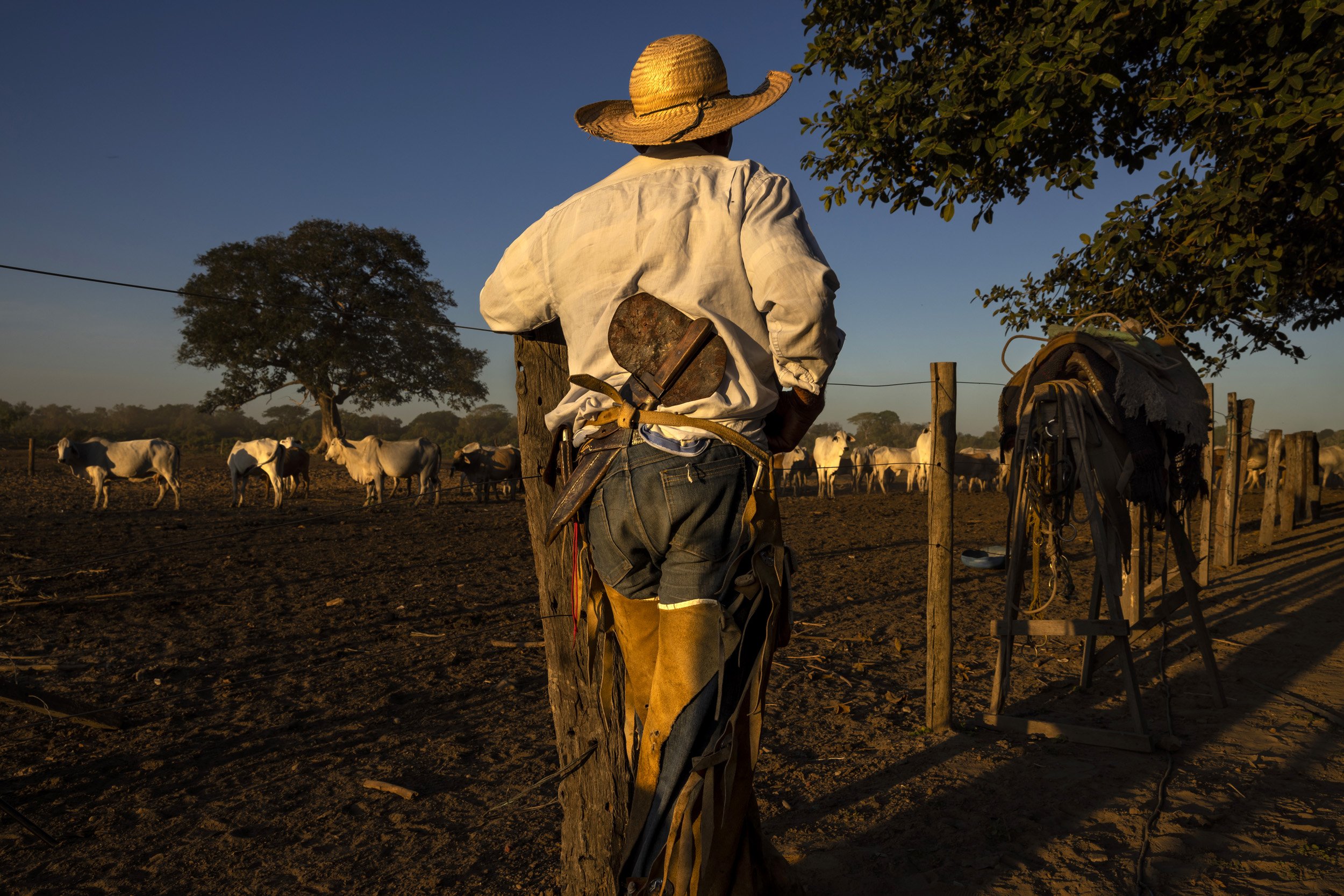
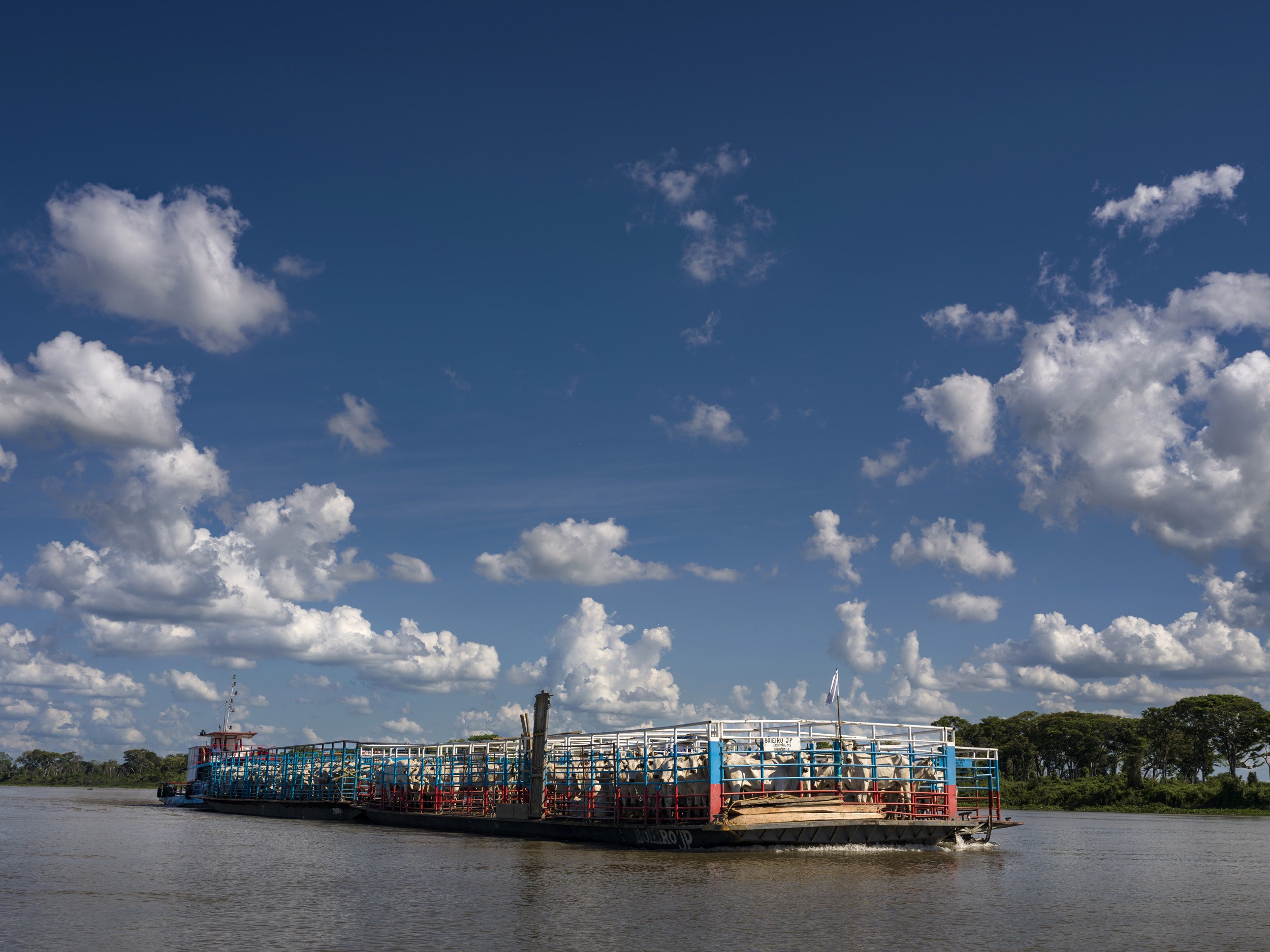
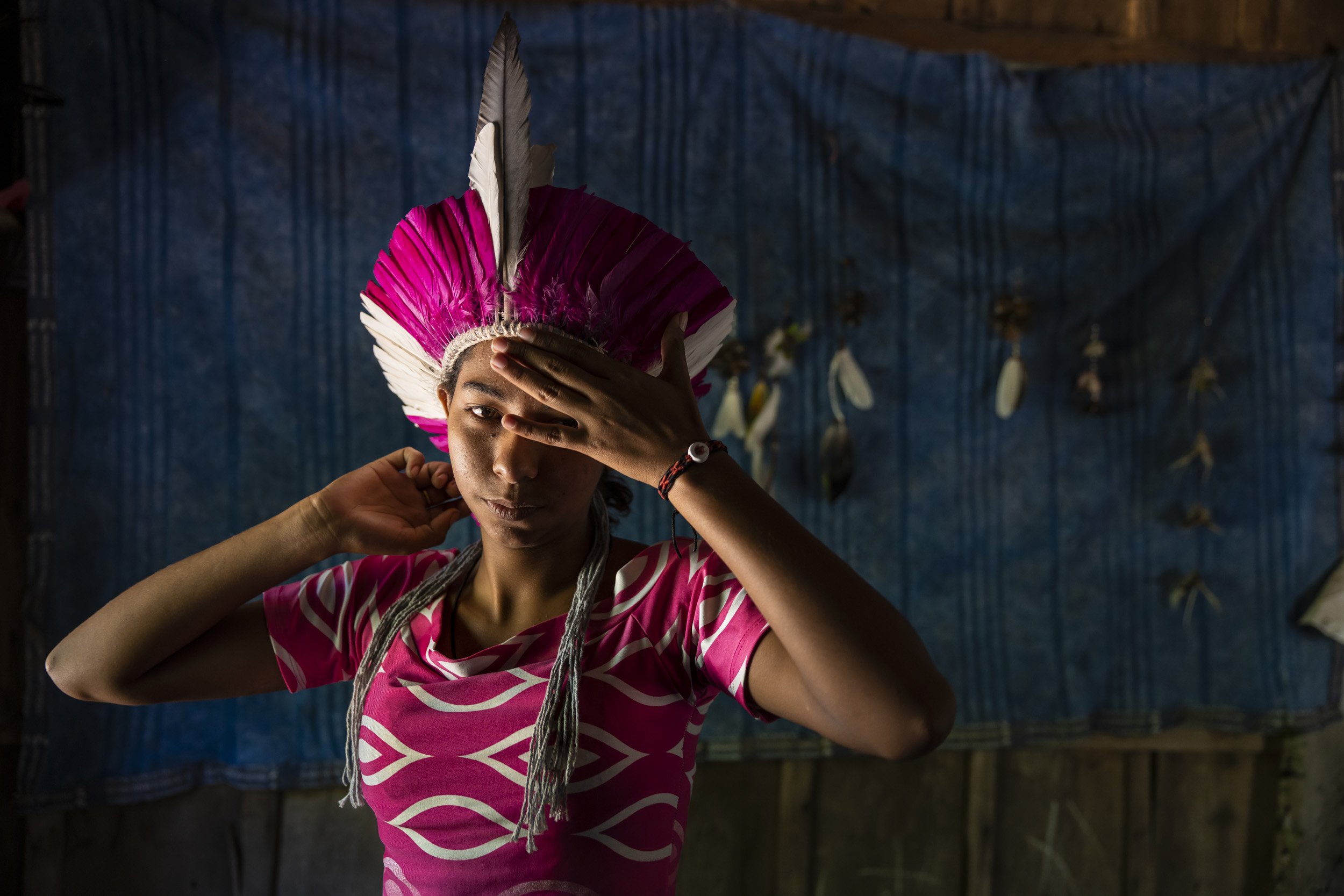

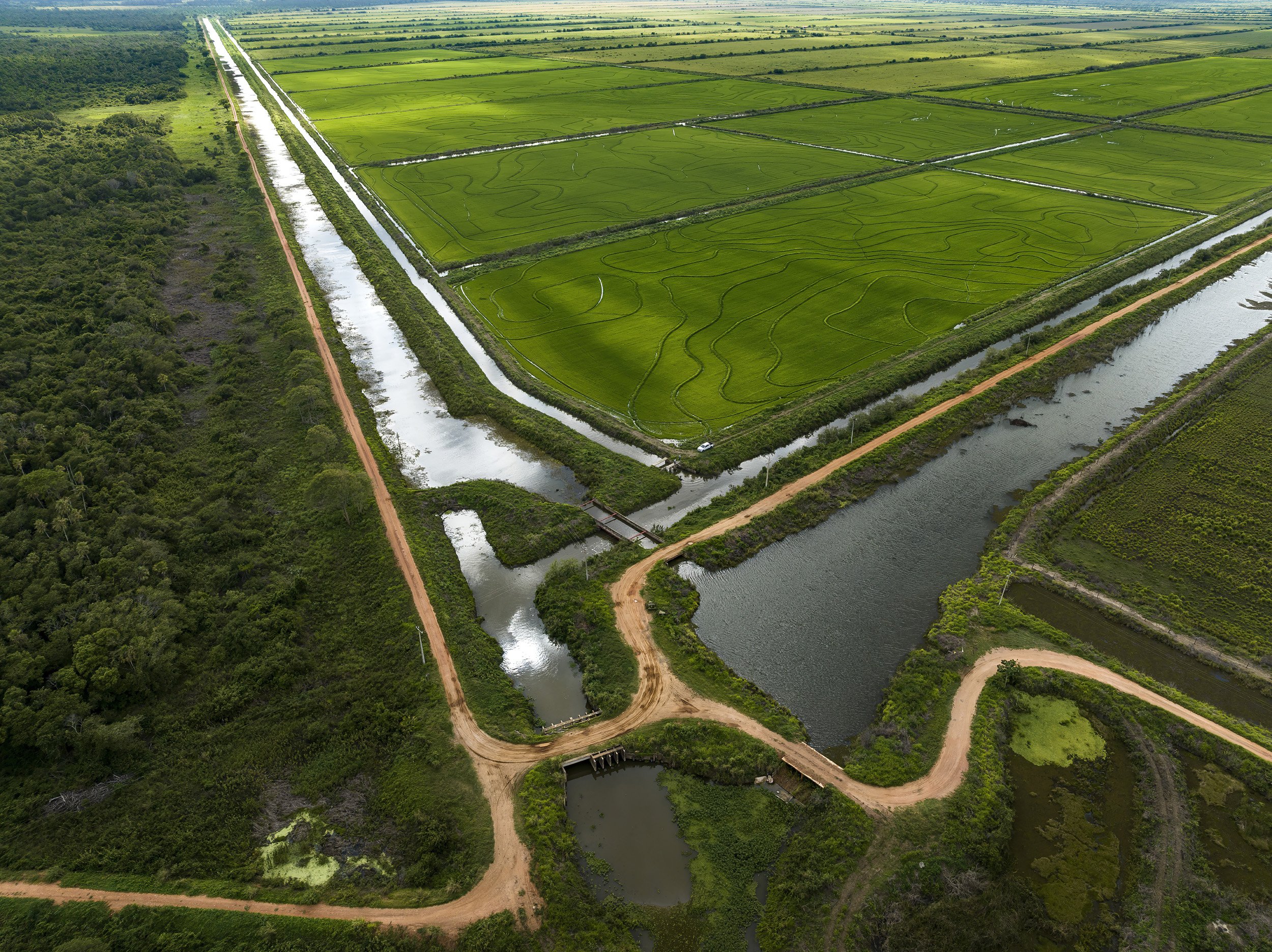
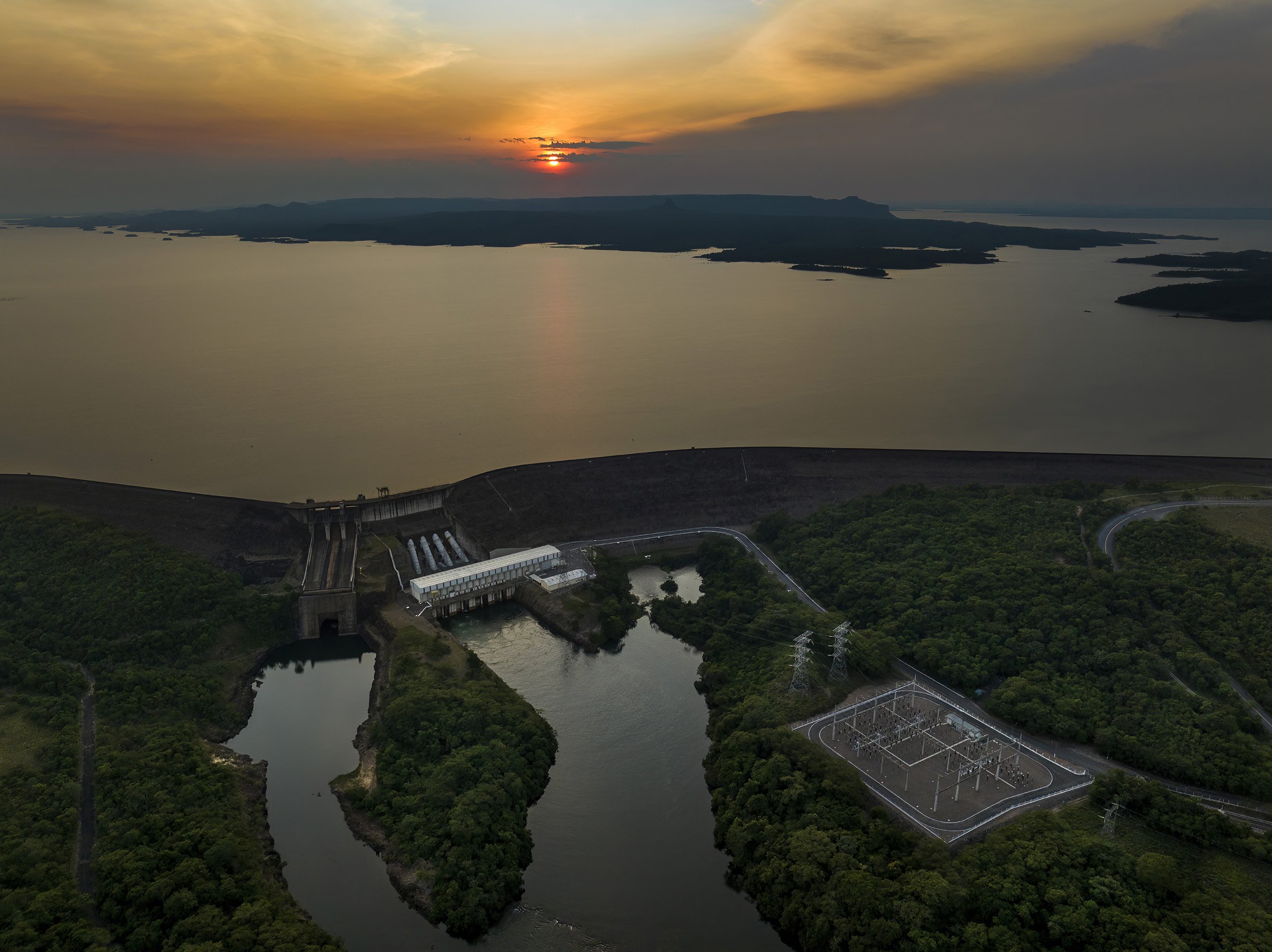
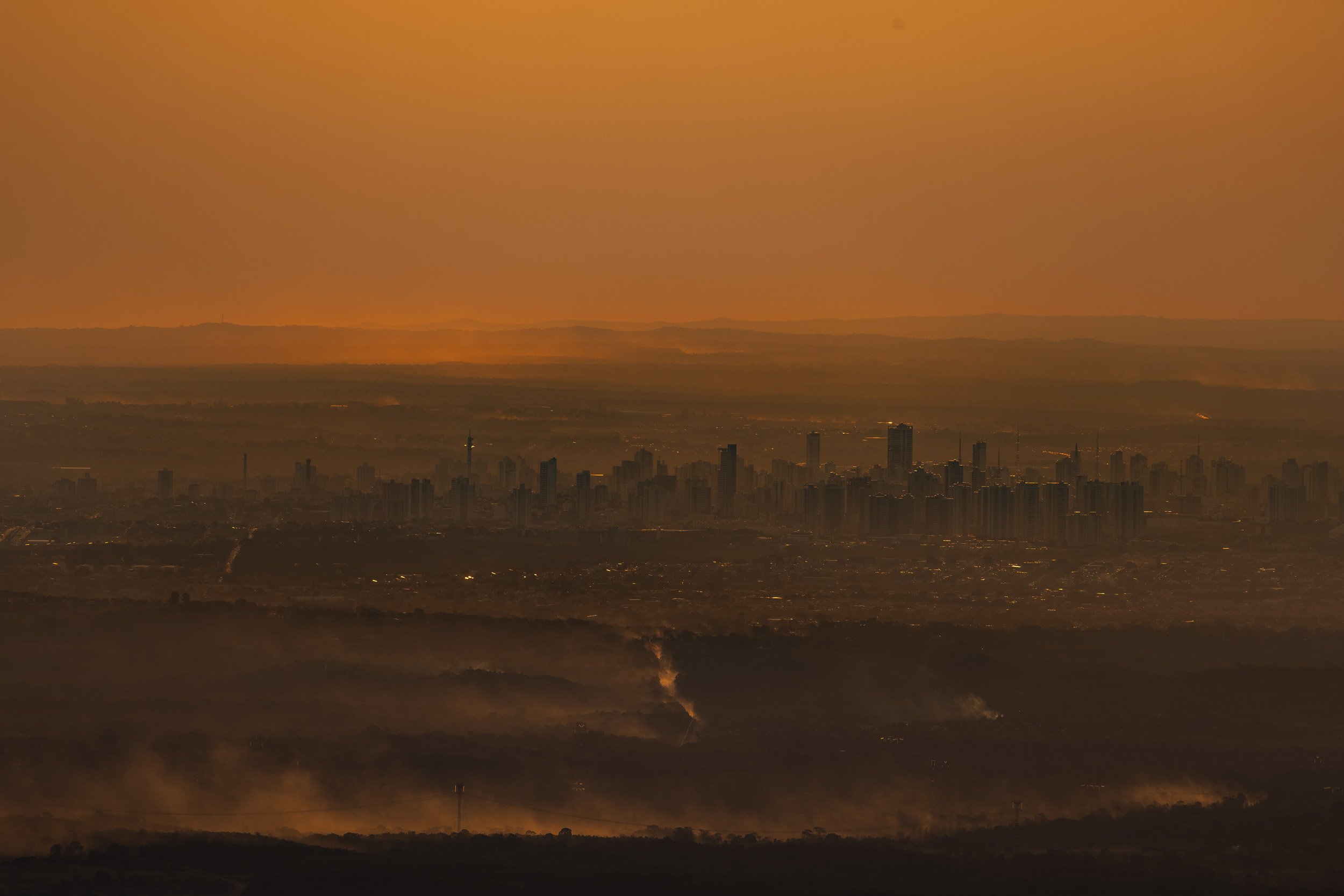
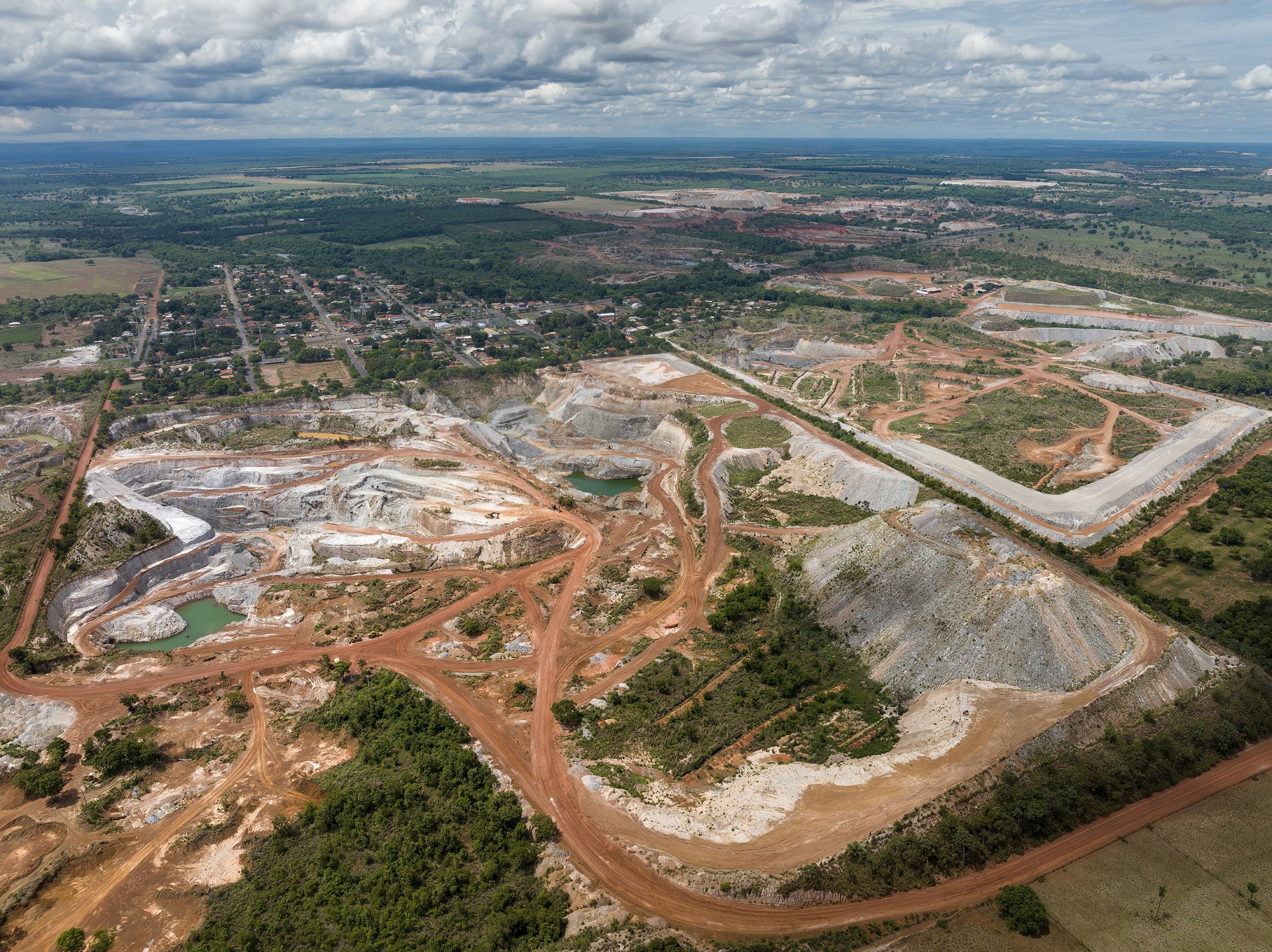
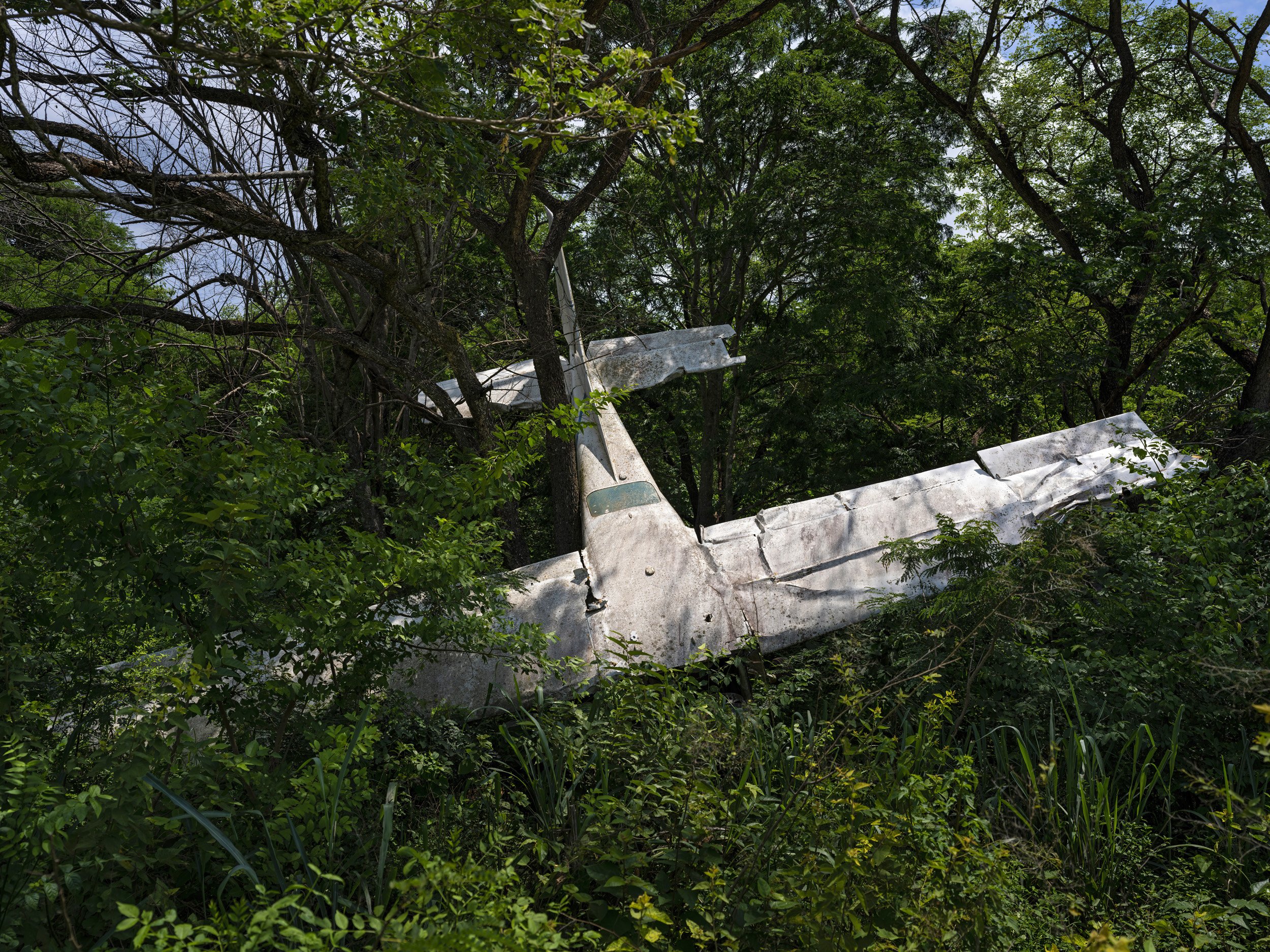
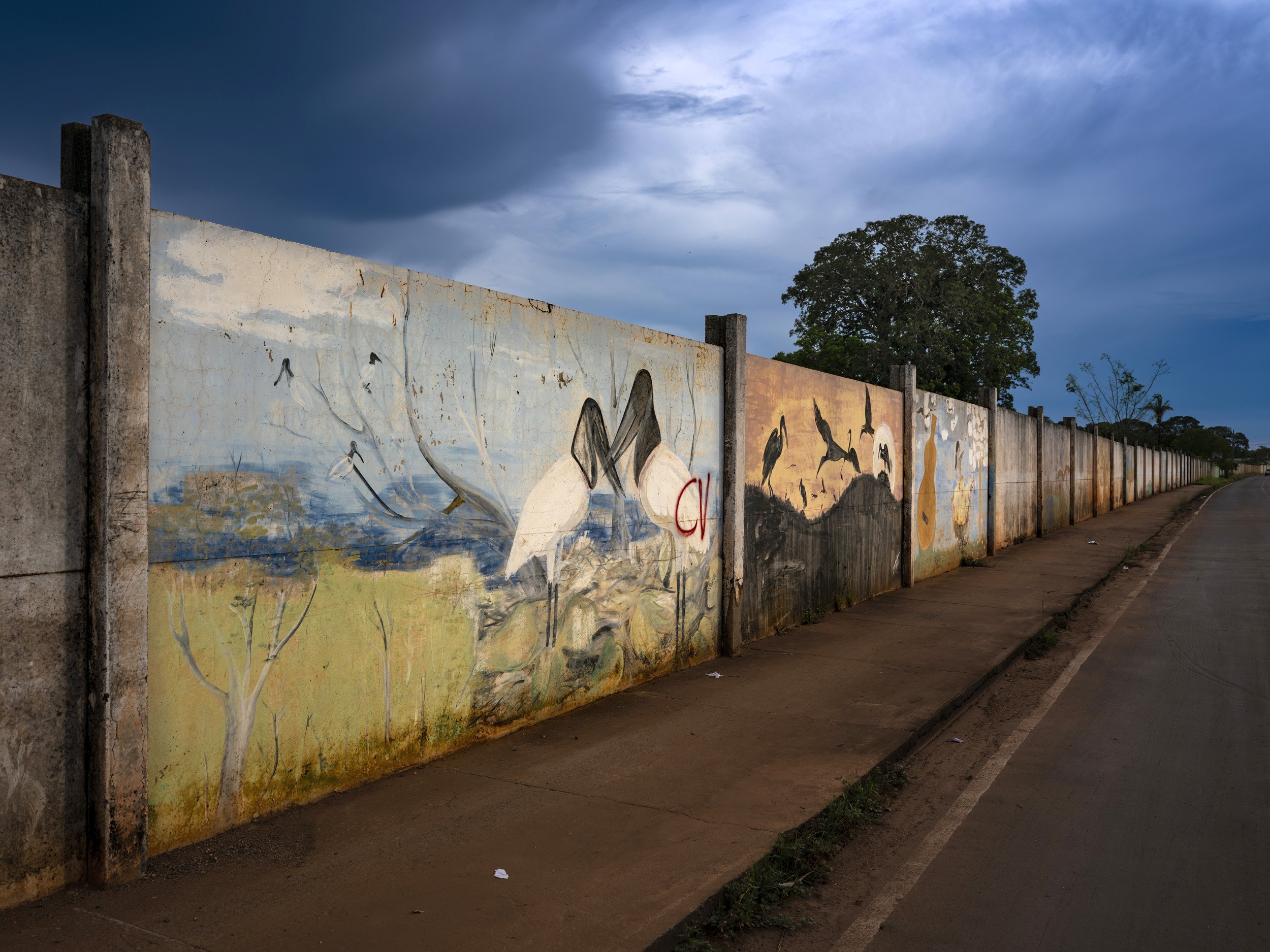
The Pantanal – Recovery and ResilienceThe Pantanal in Brazil is the world’s greatest wetland and in 2020 it experienced devastating fires which killed millions of animals and devastated their habitats. Since then, it has been in a process of recovery. This essay attempts to look at some of the key elements in the Pantanal ecosystem today. It examines the importance of clean and continued water flow from the highlands to the north of the Pantanal, the area influenced by the threatened Amazon basin. It looks at the continuing effects of poorly planned and massive agricultural development in the highlands above the Pantanal and how the subsequent mass erosion carried by the Taquari River flooded over a million hectares of land in the delta region. This devastated both cattle farming as well as wildlife habitat and it continues today. These images look at the cycle of the wet and dry season and how that essentially saves the Pantanal from agricultural and mining development and reinforces the ecology. Tourism remains a vital element in securing the future of the Pantanal, but management of that tourism is sometimes lacking. Cattle ranching is a centuries old tradition in this place, with horses often being the only means of moving cattle to higher ground once the seasons change. Keystone species such as the jaguar remain the backbone of tourism for the Pantanal but ongoing conflict between cattle ranchers and jaguars remains the case, especially amongst those who cannot afford to develop jaguar tourism of their own to subsidize cattle losses. Finally, the Pantanal is also a conduit for drugs moving from other South and Central American countries into Brazil. There are hundreds of remote airstrips and the wreckage of many small planes is seen in a few places. There are subtle gang signs on the walls of the towns that surround the Pantanal, as Rio’s and Sao Paulo gangs extend their reach to move the narcotics landing on those small strips. First image: JOFFRE, P
CHAPPADA DOS GUIMARAES, MATTO GROSSO, BRAZIL: Rain falls during a sunset in the highlands overlooking the Northern Pantanal. This rain originates in the Amazon basin and is the contributing factor to the rivers that provide clean water and make the anual wet season flooding possibly for the Pantanal. As the Amazon has lost original forests to deforestation and logging, so the "flying rivers" that originate there have diminished in size. The health of the Pantanal ecosystem and its ancient wet and dry season are deeply reliant on these highlands and the water they provide.
CHAPPADA DOS GUIMARAES, MATTO GROSSO, BRAZIL: Views of the highlands directly overlooking the Northern Pantanal. The rivers and rain here are supported by air-borne water vapor from the Amazon basin that manifests in rain in these highlands and is the contributing factor to the rivers that provide clean water and make the annual wet season flooding possibly for the Pantanal. As the Amazon has lost huge tracts of original forests to deforestation and logging, so the "flying rivers" that originate there have diminished in size. The health of the Pantanal ecosystem and its ancient wet and dry season are deeply reliant on these highlands and the water they provide as well as their connection to the Amazon.
CUIABA RIVER, PANTANAL, BRAZIL: Vultures land on a large dead cayman, most likely struck by a speeding boat carrying sport fisherman on the Cuiaba river. Tourism is a vital resource for the overall survival of the Pantanal but it is often poorly supervised.
JOFFRE, PANTANAL, BRAZIL: Horses on a cattle ranch graze at the water's edge late in the afternoon. These horses are the only way to access large parts of the Pantanal for the majority of the year. They are a vital part of the cattle industry that has been in the Pantanal since the 16th century. Cattle are moved according to the season, once the rains come and the wet season begins, they can often be moved many miles away to higher ground.
JOFFRE, PANTANAL, BRAZIL: Deer antlers litter a former toilet on a formerly grand but now unused cattle ranch. Many of the ranchers of the Pantanal speculate with land prices and cattle, buying and selling and often running the farm from the cities of Brazil. Newer, more modern and efficient farming practises exist on few farms, the restrictions on farming are severe by the environmental ministry despite the fact that all ranchers must cede at least 20% of their land to the wild.
CHAPPADA DOS GUIMARAES, MATTO GROSSO, BRAZIL: Views of the highlands directly overlooking the Northern Pantanal. The rivers and rain here are supported by air-borne water vapor from the Amazon basin that manifests in rain in these highlands and is the contributing factor to the rivers that provide clean water and make the annual wet season flooding possibly for the Pantanal. As the Amazon has lost huge tracts of original forests to deforestation and logging, so the "flying rivers" that originate there have diminished in size. The health of the Pantanal ecosystem and its ancient wet and dry season are deeply reliant on these highlands and the water they provide as well as their connection to the Amazon.
CUIABA RIVER, PANTANAL, BRAZIL: A large male jaguar lies on the bank of the Cuiaba river after finishing a meal of capibara. Jaguars are a huge tourist lure and bring millions into the Pantanal every year. Ranchers complain that the jaguars also take cattle but their value for attracting tourism far exceeds losses from cattle lost to these animals.
CUIABA RIVER, PANTANAL, BRAZIL: A male jaguar stalks through the long grass on the bank of the Cuiaba river in search of a meal. Jaguars are a huge tourist lure and bring millions into the Pantanal every year. Ranchers complain that the jaguars also take cattle but their value for attracting tourism far exceeds losses from cattle lost to these animals.
CUIABA RIVER, PANTANAL, BRAZIL: Jaguars are the world's most aquatic cat and do much of their hunting in the river and on the banks. They are a huge tourist lure for the Pantanal. They bring millions in revenue into the Pantanal every year. Ranchers complain that the jaguars take their cattle but their value for attracting tourism far exceeds losses from cattle lost to these animals.
MIRANDA, MATTO GROSSO DU SOL, BRAZIL: A forest burnt down by the fires of 2020 is seen slowly recovering with many dead trees visible. There have been no major fires since 2020 but that is because the tinder load is low after the huge fires of 2020. The Pantaneros are wary of this and want a better response from government for the next fires.
JOFFRE, PANTANAL, BRAZIL: The Pantanal has an ecology that is very much dependent on the dray and wet season. In this image, the dry season takes hold in the Pantanal, the water sliding away from the banks in an age-old cycle vital to the ecosystem of the Pantanal. The rising flood waters of the wet season are a key reason why the Pantanal remains laregely undeveloped and a refuge for many species.
TAQUARI RIVER DELTA AREA, MATTO GROSSO DOS SUL, PANTANAL, BRAZIL. Talisma Farm is seen surrounded by water even though this is the dry season in the Pantanal. In the wet season, this small farmhouse is completely an island. This is due to seriously flawed environmental planning in 1974 when the Brazilian government initiated an aggressive agricultural development plan in the highlands above the Pantanal. A huge flood dumped millions of tons of topsoil into the Taquari river and other tributaries, diverting the river and reducing the flow to the Paraguay river to 30% and creating a permanent flood condition which destroyed over 1 million hectares of the Pantanal overnight. Hundreds of farms were ruined and Talisma farm is one of only 4 farms today still operating in the flooded delta. They and the other survivors went from thousands of head of cattle to growing bananas to survive. Eroded soil continues to be dumped in the Taquari delta when the rains come and flow to the all-important Paraguay river continues to diminish.
TAQUARI RIVER DELTA AREA, MATTO GROSSO DOS SUL, PANTANAL, BRAZIL. Eraco Vilaba was born on Talisma farm and has lived there all of his 81 years. Despite this being the dry season his farm is always surrounded by water. When he was a boy, Eraco's father ran 5000 cattle on the farm until 1974. This permanently flooded situatuon is due to seriously flawed environmental planning in 1974 when the Brazilian government initiated an aggressive agricultural development plan in the highlands above the Pantanal. A huge flood dumped millions of tons of topsoil into the Taquari river and other tributaries, diverting the river and reducing the flow to the Paraguay river to 30% and creating a permanent flood condition which destroyed over 1 million hectares of the Pantanal overnight. Hundreds of farms were ruined and Talisma farm is one of only 4 farms still operating in the flooded delta. Nowadays, Eraco and his wife of 51 years, Sonia, grow bananas to survive. They are amongst the very last farmers still surviving in the Taquari river delta area and they say they will do this for two more years before they will join their children in the city of Corumba. Eroded soil continues to be dumped in the Taquari delta when the rains come and flow to the all-important Paraguay river continues to diminish.
TAQUARI RIVER DELTA AREA, MATTO GROSSO DOS SUL, PANTANAL, BRAZIL. Eraco Vilaba was born on Talisma farm and has lived there all of his 81 years. Despite this being the dry season his farm is always surrounded by water. When he was a boy, Eraco's father ran 5000 cattle on the farm until 1974. This permanently flooded situatuon is due to seriously flawed environmental planning in 1974 when the Brazilian government initiated an aggressive agricultural development plan in the highlands above the Pantanal. A huge flood dumped millions of tons of topsoil into the Taquari river and other tributaries, diverting the river and reducing the flow to the Paraguay river to 30% and creating a permanent flood condition which destroyed over 1 million hectares of the Pantanal overnight. Hundreds of farms were ruined and Talisma farm is one of only 4 farms still operating in the flooded delta. Nowadays, Eraco and his wife of 51 years, Sonia, grow bananas to survive. They are amongst the very last farmers still surviving in the Taquari river delta area and they say they will do this for two more years before they will join their children in the city of Corumba. Eroded soil continues to be dumped in the Taquari delta when the rains come and flow to the all-important Paraguay river continues to diminish.
SAN FRANSCISCO FAZENDA, MIRANDA, MATTO GROSSO DU SUL, BRAZIL: Farmer's wife Fernanda Bredow stands with her baby Cecilia as they pack up after working with a plane to seed fields all day. Specialized waterways on this farm dug out 30 years ago that channel water from the Miranda river to fields for rice-growing and other agriculture. This would be largely illegal today in the Pantanal but because this farm is right on the border of the Pantanal they can get away with it. San Francisco Fazenda is an unusual ranch that has ecotourism, cattle ranching and crop growing all in one place. Cattle ranching is an ancient practice in the Pantanal. The cattle are usually moved from lower to higher ground as the dry season becomes the wet season. There is a feeling amongst the more powerful rancher farmers of the Pantanal that the Pantanal is too protected and that using the technology of the highlands could play a role in better farming without disturbing the ecosystem. Much of that technology would be about water distribution. The farmers point out that much of the erosion on farms into rivers in the Pantanal could be prevented by dykes, which existed before the enviro protections came in. All farms in in the Pantanal are required to keep at least 20% of their land wild, with no development. Farmers feel they should be compensated for that, especially when they lack the resources to develop tourism to compensate.
JOFFRE, PANTANAL, BRAZIL: Bridges are many and vital in the pantanal, especially during fires and the wet season. There are 122 bridges found along the well-known 145-km-long “Transpantaneira” raised dirt and gravel road. Visitors will often encounter herons, caimans, and capybaras and even jaguars. Without there bridges it is almost impossible to supply the people of the Pantanal so they are constantly maintained.
MIRANDA, MATTO GROSSO DU SOL, BRAZIL: A tourist boat ferries people on a jaunt along the Miranda river on the San Francisco Fazenda. This is a popular tourist place where people can easily access the Pantanal for day trips or more. Tourism is a major driver for the Pantanal, bringing in hundreds of millions of dollars and creating ongoing incentive for good conservation practises for this unique wetland.
CUIABA RIVER, PANTANAL, BRAZIL: The Pantanal is the world's largest wetland and because of its rich ecosystem, it attracts one of the greatest and most diverse bird populations on earth. This brings a large number of international tourists into the Pantanal There are certain bird species such as the blue Macaw that are only found in the Pantanal.
CUIABA RIVER, PANTANAL, BRAZIL: The Pantanal attracts one of the greatest and most diverse bird populations on earth. This includes the rare and extremely endangered Blue Macaw, the Pantanl has the highest numbers of this extremely rare bird. This brings a large number of international tourists into the Pantanal that may help to guarantee its survival despite illegal trade.
Blue Hyacinth Macaws along the Pantanal, one of the rarest birds in the world and estimated at 2500 to 5000 in the wild today, the Pantanal is a major habitat for this largest of Macaws.
JOFFRE, PANTANAL, BRAZIL: Two Jabiru storks, the symbolic bird of the Pantanal, are seen in a mating ritual. The jabiru stork holds the title for largest flying bird in the Americas. It grows 4 to 5 feet tall and has a wingspan of 9 to 12 feet. Breeding storks enjoy the marshlands available in the Pantanal region and it is an important breeding ground for a bird that is increasingly losing habitat across the Americas.
Joffre, Pantanal, Brazil: A giant otter snatches a fish from the Joffre river. The largest otter alive today, these loud and social animals rule the waterways and at 5-6 feet long and weighing up to 70 pounds, they are large enough to fend off caiman and jaguars. A family of otters can be as small as four individuals or on average 8-10 in some areas. Today the giant otter only lives in the most remote waters in tropical South America. Hunting for their luxuriant fur, along with habitat loss, has greatly reduced their numbers to an estimated 2,000 to 5,000 total in the wild.
Matto Grosso, Pantanal, Brazil: Lais Calzolari is a vet for wildlife NGO Ampara Silvestre, she is seen with a tapir named Tiao. He was rescued as a baby from the fires of 2020. His paws were too badly burnt for him to walk or run normally so he is looked after in a hotel's wildlife park. Millions of animals were killed in those fires but most of those that were rescued have been releases back into the Pantanal or sent to zoos in Brazil if that was not possible.
SAN FRANSCISCO FAZENDA, MIRANDA, MATTO GROSSO DU SUL, BRAZIL: Cowboys relax after moving a large herd of cattle to higher ground on the San Franciscio Fazenda, an unusual ranch that has ecotourism, cattle ranching and crop growing all in one place. Cattle ranching is an ancient practise in the Pantanal. The cattle are usually moved from lower to higher ground as the dry season becomes the wet season.
Joffre, Pantanal, Brazil.. Ranchers from different properties stop on the Transpanternero highway to help rescue a broken tractor. There is a long-standing spirit of cooperation amongst people in the Pantanal. In this remote and difficult terrain, people cannot rely on help from outside sources and so they help each other.
PANTANAL, BRAZIL, 23 MAY 2022: Seul Celso Rondon de Arruda is 67 years old, born and raised in Pantanal. As a cattle rancher, Seul Celso owns 800 cows and 14 horses. The first six months of 2022, he lost 40 calfs because of jaguar attack: each calf killed equals a total loss of 600 euros (if its a male) and 400 if its a female. According to him, 2022 is a particularly bad year: on average, the amount of calf lost to jaguar attacks each year reached 20. He acknowledges that a strong jaguar population is a good thing for the Pantanal as it draw tourists to the area and boost the construction of lodges and hotel. But in the same times, jaguars become more accustomed to the presence of humans and thus become more reckless. He bares no grudjes toward hotel owners and the people from the tourism industry, but his opinion is that cattle ranchers should be compensated for the loss of cattle - by the governement or the hotel owners, he does not say. (photo by Brent Stirton/Getty Images for Le Figaro/Rocher Foundation.
PANTANAL, BRAZIL, 23 MAY 2022: Seul Celso Rondon de Arruda is 67 years old, born and raised in Pantanal. As a cattle rancher, Seul Celso owns 800 cows and 14 horses. The first six months of 2022, he lost 40 calfs because of jaguar attack: each calf killed equals a total loss of 600 euros (if its a male) and 400 if its a female. According to him, 2022 is a particularly bad year: on average, the amount of calf lost to jaguar attacks each year reached 20. He acknowledges that a strong jaguar population is a good thing for the Pantanal as it draw tourists to the area and boost the construction of lodges and hotel. But in the same times, jaguars become more accustomed to the presence of humans and thus become more reckless. He bares no grudjes toward hotel owners and the people from the tourism industry, but his opinion is that cattle ranchers should be compensated for the loss of cattle - by the governement or the hotel owners, he does not say. (photo by Brent Stirton/Getty Images for Le Figaro/Rocher Foundation.
SAN FRANSCISCO FAZENDA, MIRANDA, MATTO GROSSO DU SUL, BRAZIL: Cattle ranching is seen on the San Franciscio Fazenda, an unusual ranch that has ecotourism, cattle ranching and crop growing all in one place. Cattle ranching is an ancient practise in the Pantanal. The cattle are usually moved from lower to higher ground as the dry season becomes the wet season.
SAN FRANSCISCO FAZENDA, MIRANDA, MATTO GROSSO DU SUL, BRAZIL: Cowboys work to manouvere cattle into a large enclosure after driving them from lower ground to higher ground. Cattle ranching is an ancient practise in the Pantanal. The cattle are usually moved from lower to higher ground as the dry season becomes the wet season. For hundreds of years, this was the economic driver of the Pantanal.
Pantanal, Brazil: Cowboys seen moving cattle to higher ground before the beginning of the wet season. Cattle ranching is a centuries old tradition in the Pantanal. All ranchers are required to leave a minimum of 20% of their land wild and protected. Many of these areas form corridors for wildlife.
SAN FRANSCISCO FAZENDA, MIRANDA, MATTO GROSSO DU SUL, BRAZIL: A cowboy waits for the cattle to come into the enclosure after driving them from lower ground to higher ground. Cattle ranching is an ancient practise in the Pantanal. The cattle are usually moved from lower to higher ground as the dry season becomes the wet season. For hundreds of years, this was the economic driver of the Pantanal.
Joffre, Pantanal, Brazil. Cowboys open gates in flooded zones in order to move their cattle to higher ground. Horses are indispensable for ranching in the Pantanal and so cattle ranching is conducted in ways that are often centuries old and unchanged. All ranchers are required to leave a minimum of 20% of their land wild and protected. Many of these areas form corridors for wildlife.
PANTANAL, BRAZIL, 23 MAY 2022: Seul Celso Rondon de Arruda is 67 years old, born and raised in Pantanal. As a cattle rancher, Seul Celso owns 800 cows and 14 horses. The first six months of 2022, he lost 40 calfs because of jaguar attack: each calf killed equals a total loss of 600 euros , if its a male and 400 if its a female. According to him, 2022 is a particularly bad year: on average, the amount of calf lost to jaguar attacks each year reached 20. He acknowledges that a strong jaguar population is a good thing for the Pantanal as it draw tourists to the area and boost the construction of lodges and hotel. But in the same times, jaguars become more accustomed to the presence of humans and thus become more reckless. He bares no grudjes toward hotel owners and the people from the tourism industry, but his opinion is that cattle ranchers should be compensated for the loss of cattle - by the governement or the hotel owners, he could not say. It is also a legal requirement that all ranch owners keep a minimum of 20% of the farmland wild so that corridors are formed for wildlife. This is also contentious amongst ranchers in the Pantanal.
CORUMBA, MATTO GROSSO DU SUL, BRAZIL: Cattle in this region are brought to market via huge river barges becasue of huge, permanent flooding due to poor environmental planning in the seventies when Brazil attempted to supersize agriculture in the highlands around the Pantanal. The government at that time did this without thinking how erosion in the wet season would permanently divert major river courses, thereby permanently destroying over 1 million hectares of cattle ranching land almost all the ranches on that land.
Baia Dos Guatos, Pantanal, Brazil: A girl from a Guatos indigenous indian family tries on a traditional head-dress she has just finished making. Ironically, this young girl and her sisters rediscovered their cultural heritage through Google and by talking with other indigenous groups. Their parents were scorned until recently so they neglected to teach these tradtions to their children but the girls wanted to be proud of their heritage so they conducted the research themselves and are trying to learn more traditional ways. Most indigenous people in the Pantanal region has intergrated into the wider community and live conventional lives.
Paraguay River, Matto Gross do Sul, Brazil: A young girl and her tame parrot in a simple fisherman's home on the Paraguay river in the early evening. Most of the people in this community used to live and work on cattle ranches inside the delta area of the Taquari River. Huge floods caused by erosion erased those farms and people were forced to resettle and find new employment.
SAN FRANSCISCO FAZENDA, MIRANDA, MATTO GROSSO DU SUL, BRAZIL: Specialized waterways dug out 30 years ago that channel water from the Miranda river to fields for rice-growing and other agriculture. This would be largely illegal today in the Pantanal but because this farm is right on the border of the Pantanal they can get away with it. San Francisco Fazenda is an unusual ranch that has ecotourism, cattle ranching and crop growing all in one place. Cattle ranching is an ancient practice in the Pantanal. The cattle are usually moved from lower to higher ground as the dry season becomes the wet season. There is a feeling amongst the more powerful rancher farmers of the Pantanal that the Pantanal is too protected and that using the technology of the highlands could play a role in better farming without disturbing the ecosystem. Much of that technology would be about water distribution. The farmers point out that much of the erosion on farms into rivers in the Pantanal could be prevented by dykes, which existed before the enviro protections came in. All farms in in the Pantanal are required to keep at least 20% of their land wild, with no development. Farmers feel they should be compensated for that, especially when they lack the resources to develop tourism to compensate.
Mansor Dam, Matto Gross, Brazil: A number of dams have been built on rivers that are important tributaries to the Pantanal. The Mansor dam was built in 2001 and had the effect of stopping the annual flooding for cities in the pathway. This worked for the nearby cities but changed the ecology of the Northern Pantanal. It dramatically affected the biodiversity. Hydroelectricity is an important focus for the Matto Grosso government to power the growing population but many in the Pantanal are against this. There are plans now to dam the Quiba River, a very important river for the Pantanal. Only 30% of the rivers that feed the Pantanal are still free of dams.
Cuiaba, Matto Grosso, Brazil: Cuiaba is the main city on the north side of the Pantanal. The cities and town around the Panatanal continue to grow and this places more pressure on the Pantanal in terms of clean water flow and environmental protections.
Pocone, Matto Grosso, Brazil: Pocone is a town right on the edge of the Pantanal. It was originally built around cattle ranching but now is largely about gold mining. There are two large mines both on the outskirts of the town and inside the town itself. Goldmining uses a great deal of water and this affects water available for the Pantanal as well as water purity. The mines claim to be environmentally safe but the groundwater is affected and jaguars tested for mercury contamination test the highest in the world for this substance. The mercury is thought to infiltrate the groundwater, then the fish, the caiman eat the fish and the jaguars eat the caiman. The wet and dry season of the Pantanal help to disuade gold and mineral prospectors but it remains an ever-present threat that conservationists must constantly be aware of.
Sasn Francisco, Miranda, Matto Grosso do Sul, Brazil: A crashed plane suspected of transporting narcotics is seen on a farm close to the small town of Miranda. The pilot escaped but people came back and took the plane's GPS and cargo. The Pantanal is a place where there are many small isolated mining strips. Drugs are flown in from surrounding countries and collected there. There have been incidents where cartel and gang members involved in such things have shot jaguars.
Pocone, Matto Grosso, Brazil: A red gang symbol CV is seen on a nature mural on a mine wall in the town of Pocone. The CV stands for Comandante Vermilion or Red Command, a gang affiliated with drugs and violence that is found throughout Brazil. The Pantanal is a place where there are many small isolated landing strips. Drugs are flown in from surrounding countries and collected there. There have been incidents where cartel and gang members involved in such things have shot jaguars. Gang members in the towns around the Pantanal help to facilitate the movement of these narcotics to the larger towns.
